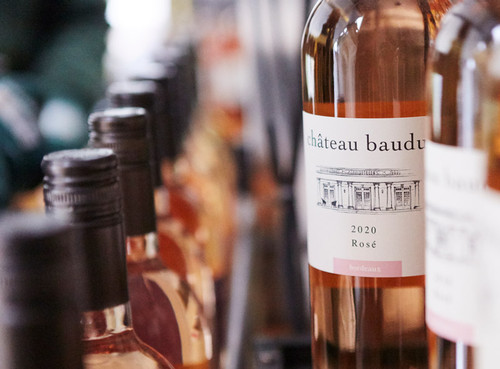Bottling the 2020s - a photo journal
Posted by Gavin Quinney on 12th Feb 2021
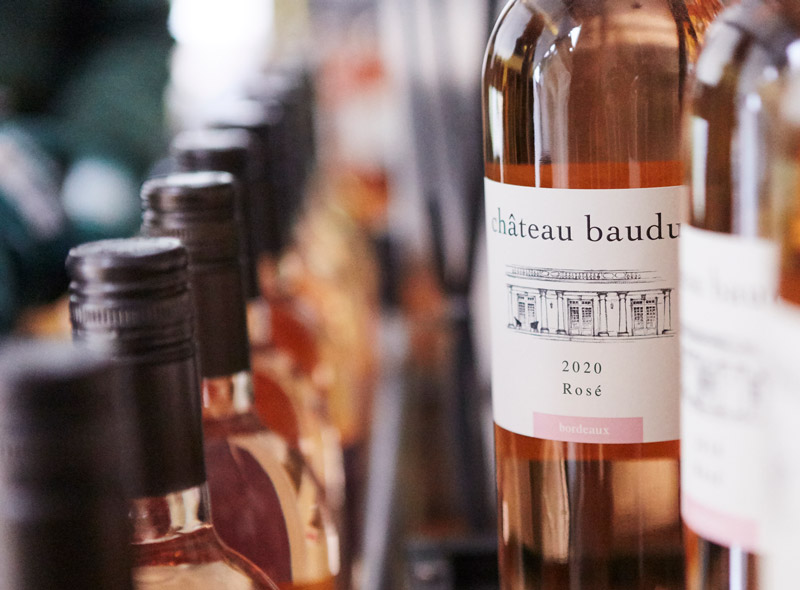
We had a fantastic response to the launch of our new wines a week ago. Most of the orders for England and Wales placed up until Wednesday morning – we had several hundred – will have been delivered by the end of today at the latest (touch wood, given the weather).
The other reason for writing is to share a photo journal of the bottling of the wines, and the start of their journey to England.
We have UK stock of most wines. In case you missed it, or to refer to the offer again, the original email can be seen here.
Please note that the opening offer is for February only.
All the best
Gavin & Angela Quinney
PS If you would rather view this in the gallery it's here.
Bottling the 2020s
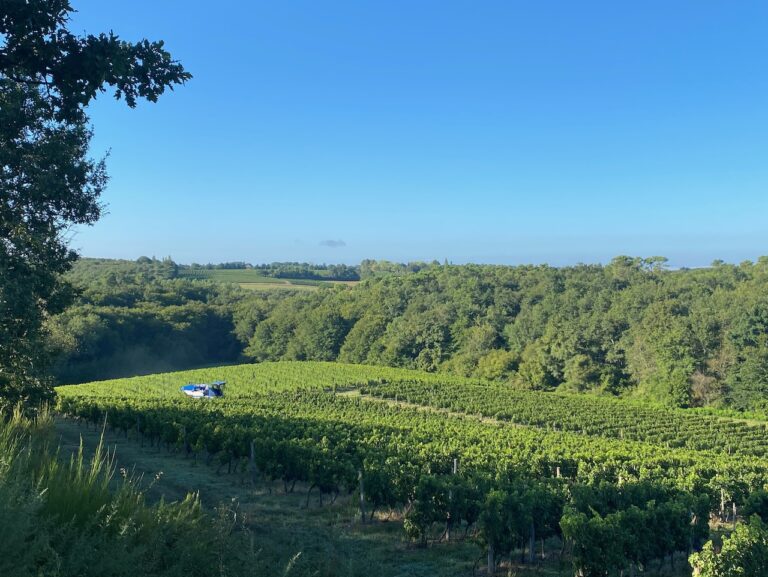
The bottling, of course, is just one part of the process. At the end of this missive there are links to how we got to this point, with photo journals of the harvest. This was the Sauvignon Blanc.
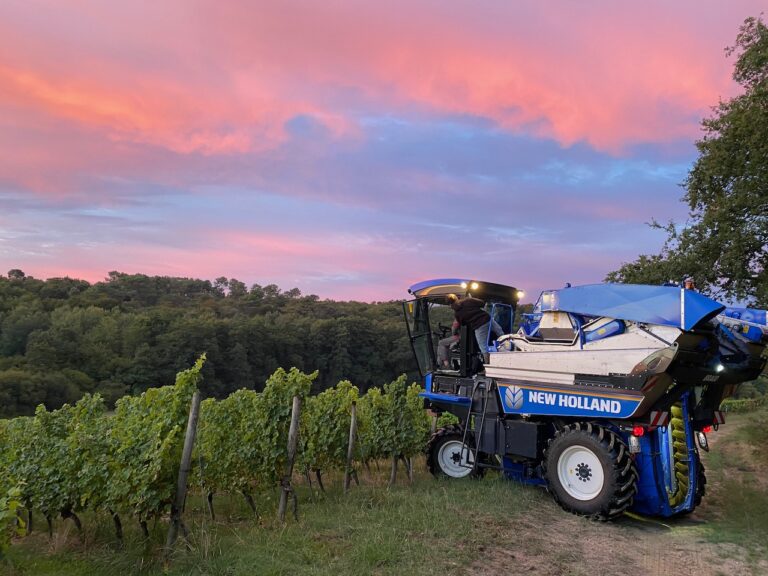
You don’t need your own vineyards to make wine but we think it helps. What you do need is kit, or access to kit.
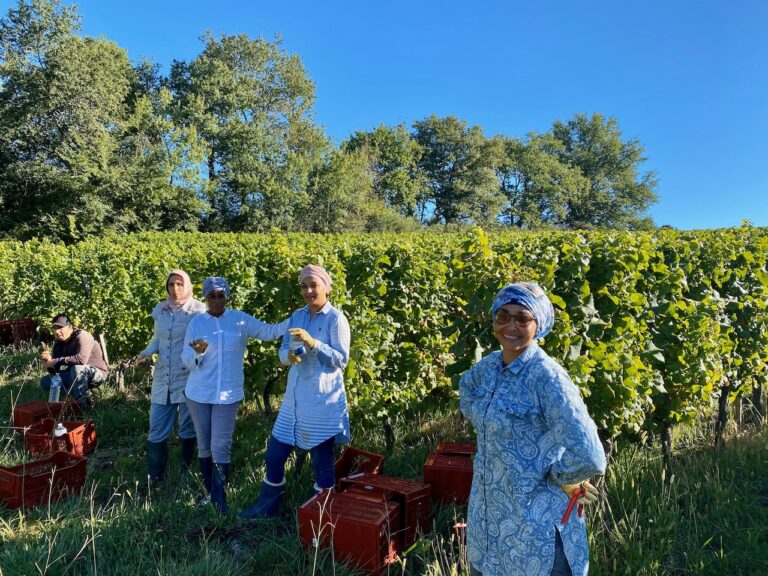
But it’s not just about machinery. You need good people at every stage.
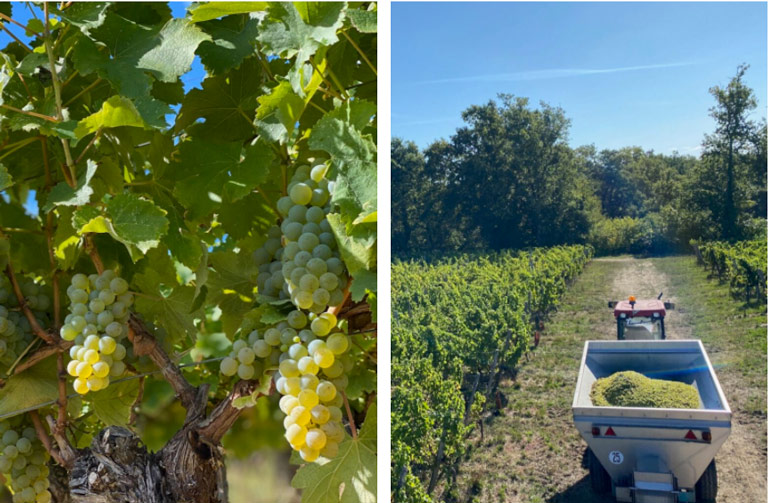
And bloody good weather helps. No sun means no grapes, or at least not ripe ones.
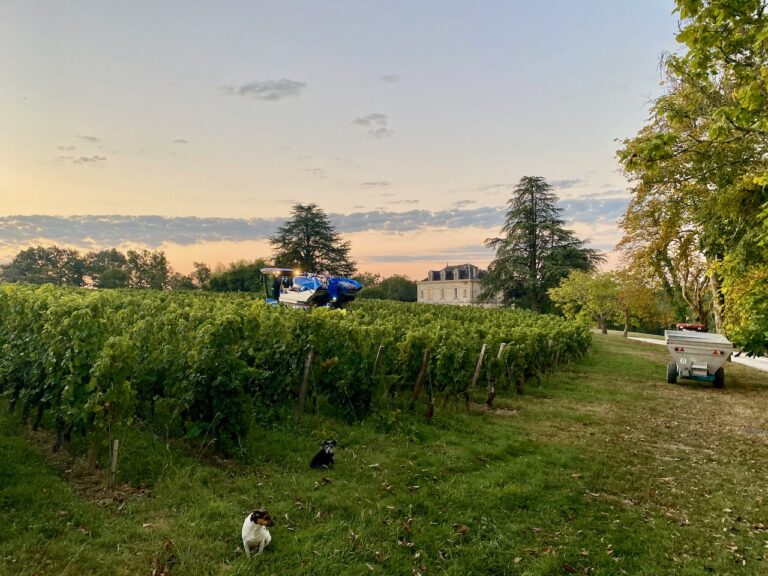
You don’t really need vineyard dogs to be fair, although don’t tell them that. Nor do you need a fancy Château. This was Merlot for the 2020 Rosé, by the way.
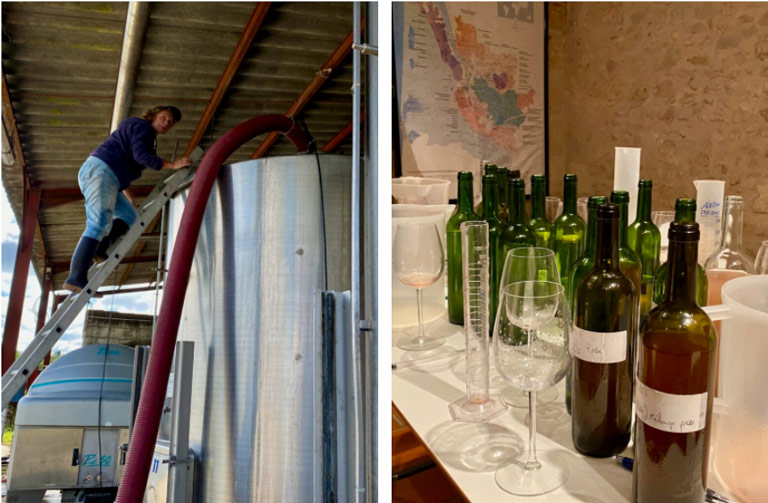
Kit and good people, again. Nelly checking on the grapes going into a chilled tank, with the pneumatic press behind. Once it’s all made, to cut a long story short, it’s all in the blending. Hopefully it all marries together well, though not always. Our rule of thumb is to only bottle what we’d drink ourselves at home.
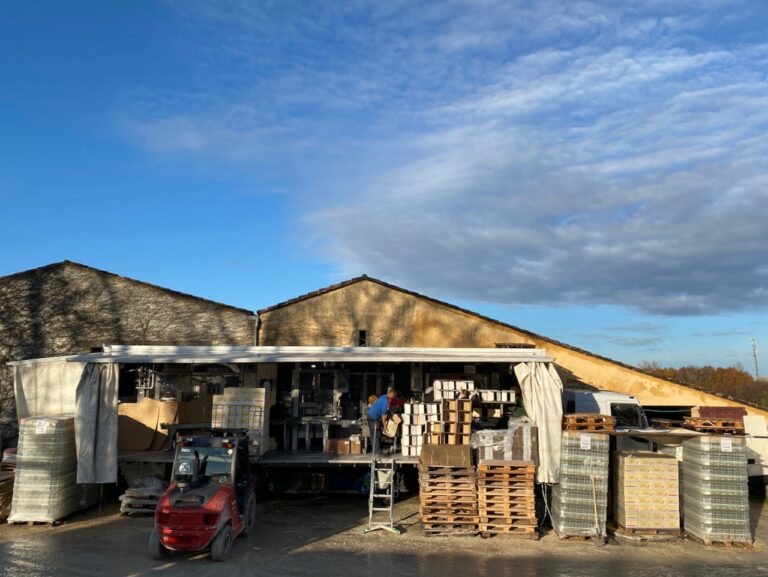
We used to have our own bottling machine, years ago, but because we use Stelvin screwcaps for white and rosé, and cork for red, we use one of the best companies who bring everything to us.
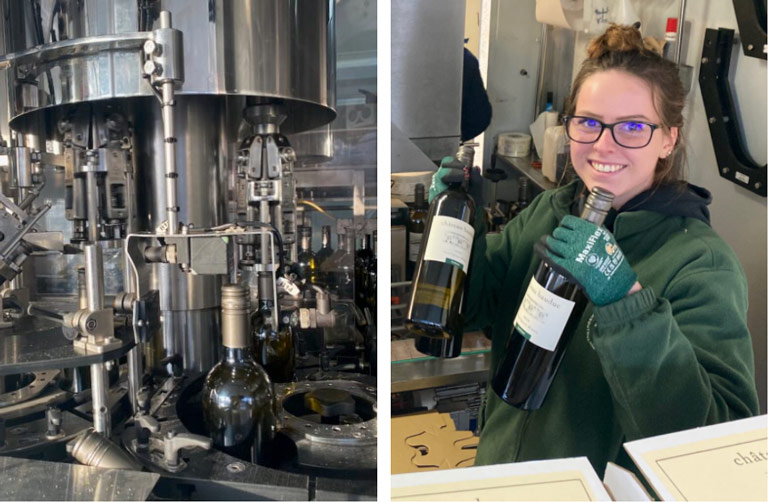
Again, fancy kit and good people.
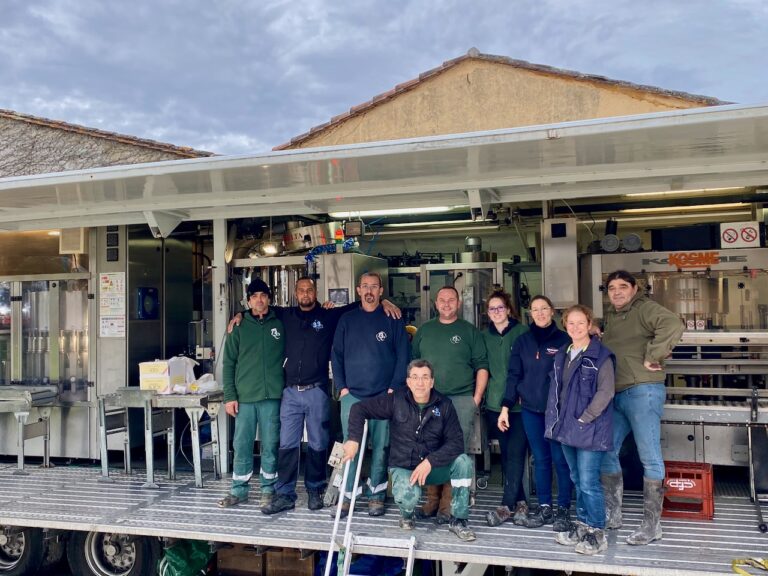
This is like one of the images used in a Rick Stein TV programme. Our Daniel and Nelly, on the right, were on hand from our end. This isn’t the whole team we had from Thierry Bergeon, the bottling company, but the few that made it through the full ten days.
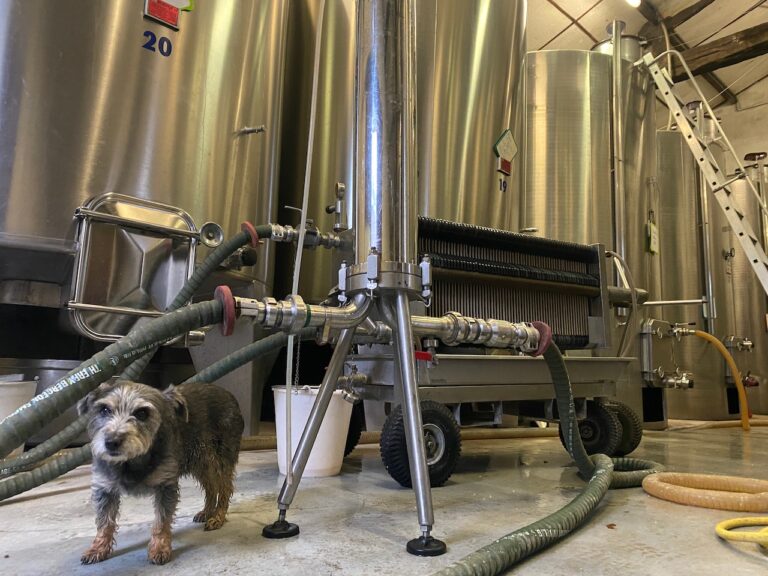
You need a good cellar master too, to make sure the wine is in optimum condition for bottling.
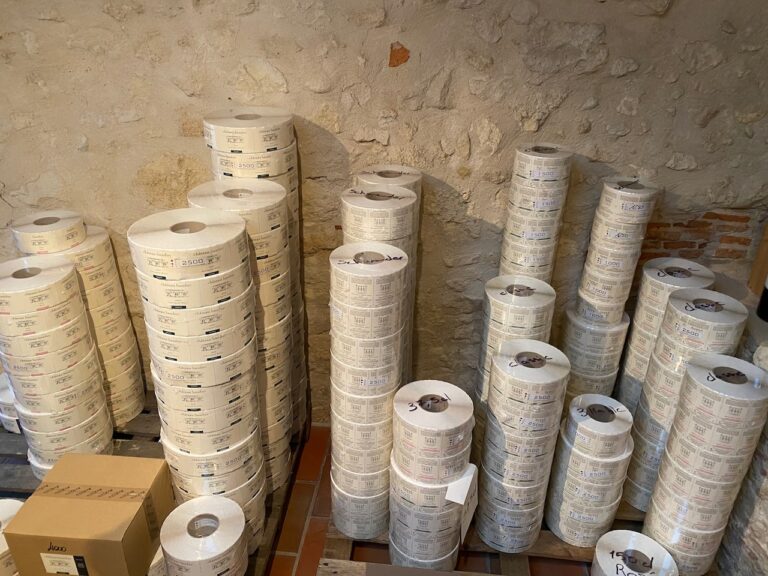
Long before the bottling, we have to get everything in place. One of the biggest and painstaking jobs is organising, writing and designing the labels, and in particular the back labels, such as those below.
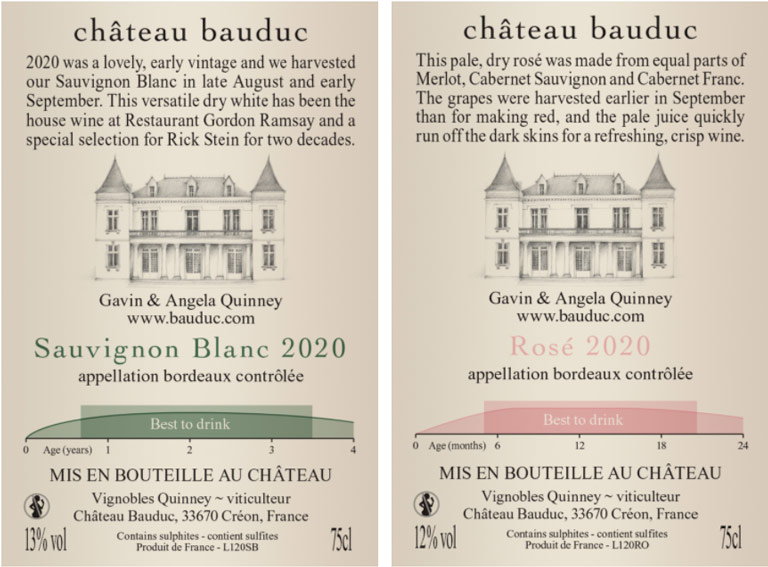
Here are two of the latest ones, with ‘best to drink’ indicators. These indicators are one reason why we put the month of the harvest in the text, if you follow the idea. Compare, by the way, the rosé ‘drinking window’ to the reds further down.
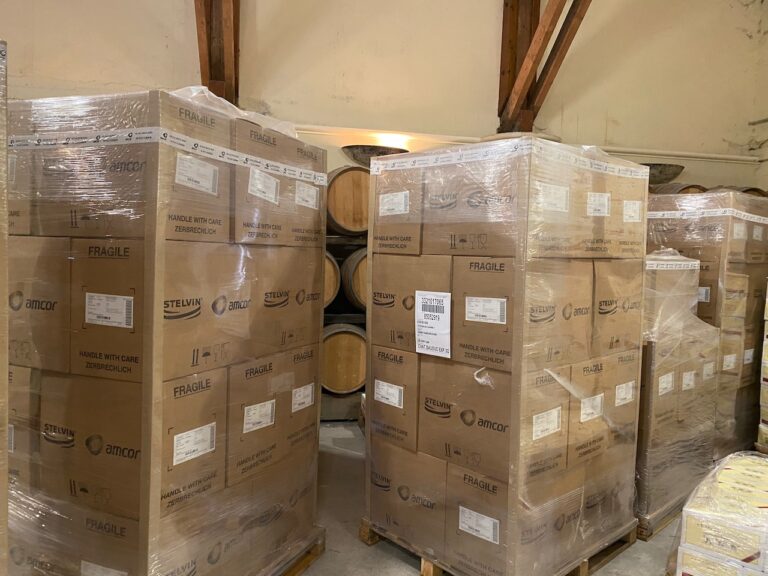
A small delivery of bespoke Château Bauduc Stelvin screwcaps.
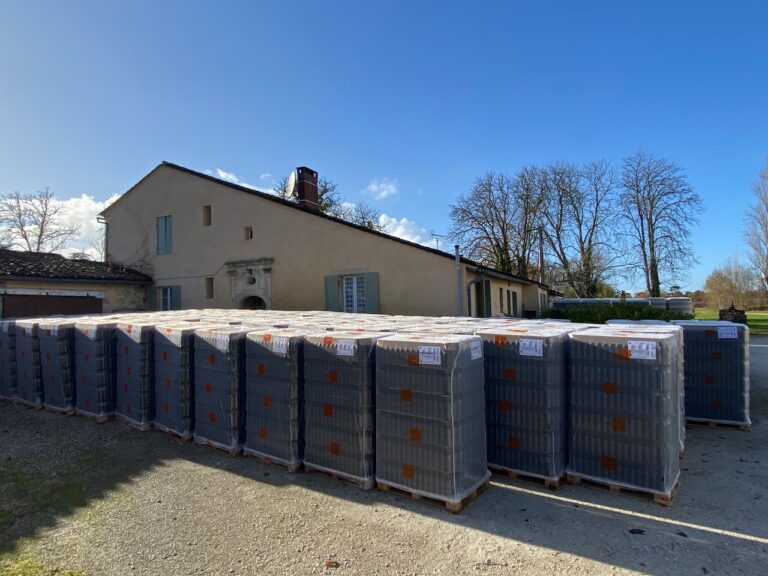
We buy what feels like a vast amount of bottles. One of the challenges this vintage was the shortage of our particular bottle for the whites. Way back when in the early 2000s, we plumped for a Bordeaux-shaped bottle in a non-standard colour – it’s called Antique or Chène – and with a screwcap fitting.
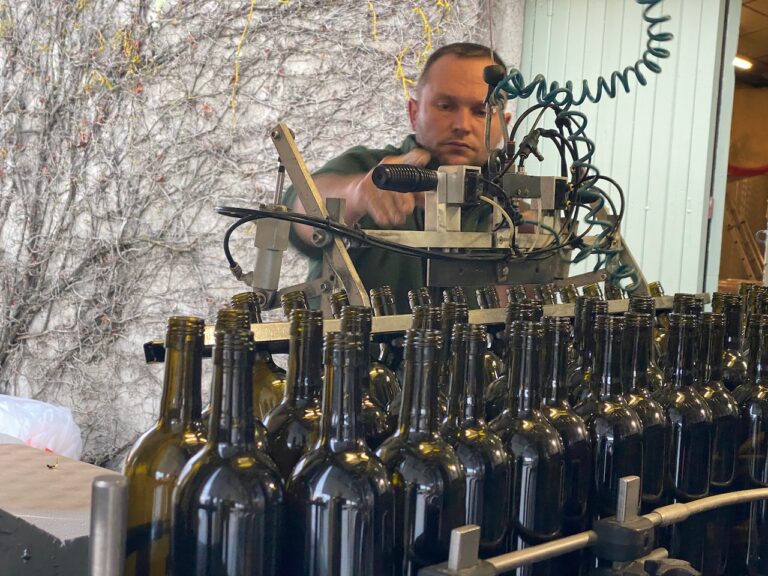
Back in November we bought the last 120,000 bottles of the physical stock available of this type of bottle. Or so we were told.
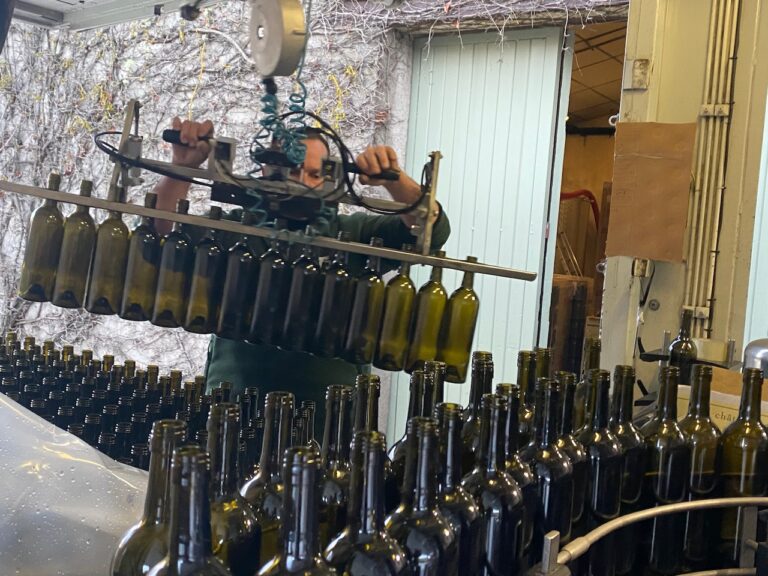
This is how the bottles are moved from the pallet to the bottling machine.
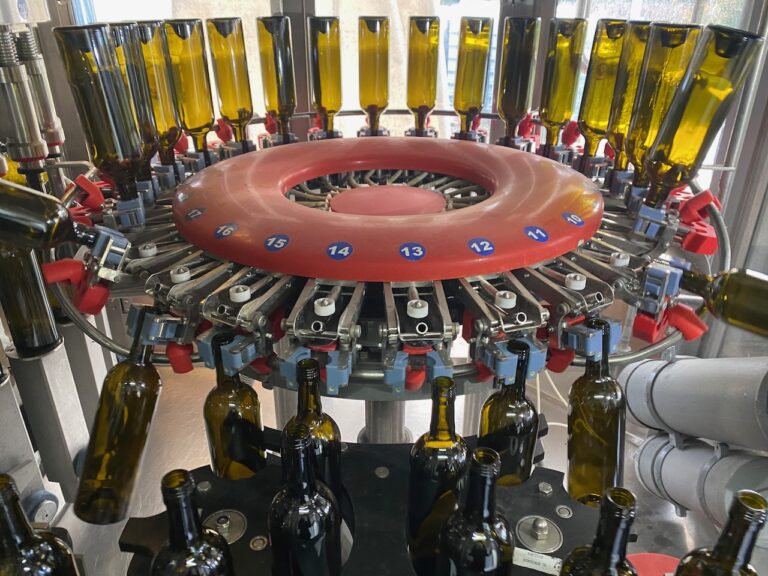
The bottles are kept in sealed pallets before use but we wash and dry them anyway once in the machine, right at the start.
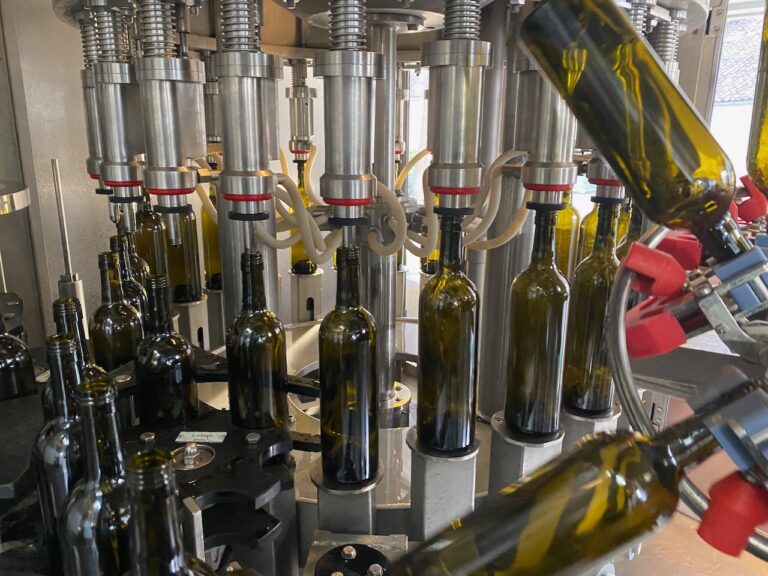
Filling the bottles. The wine has to go in at the right temperature, amongst other things.
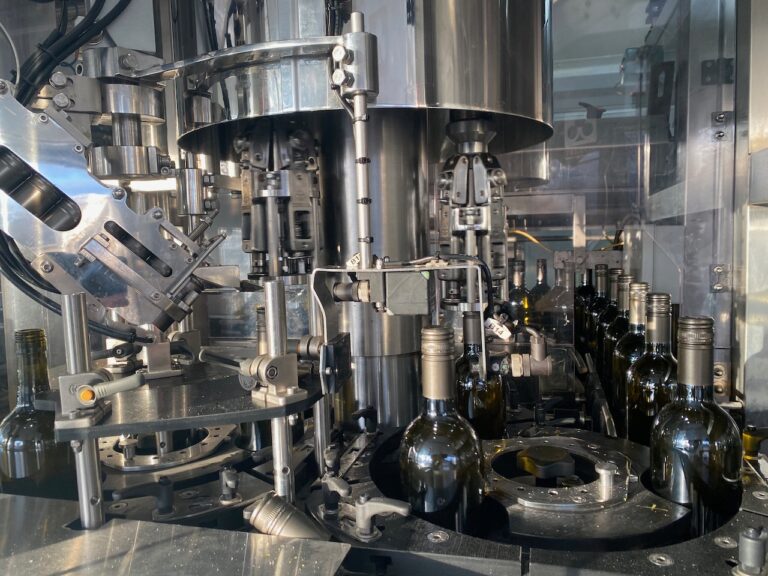
Screwcap bottling.
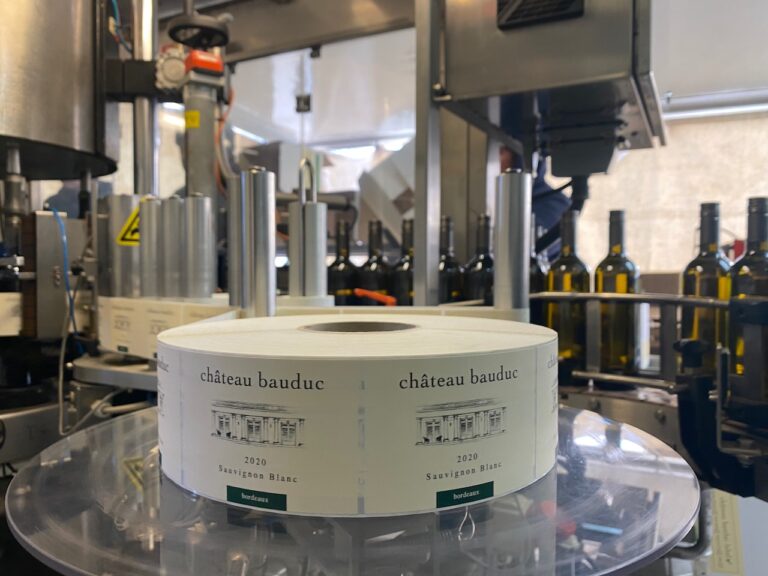
The 2020 Sauvignon Blanc label.
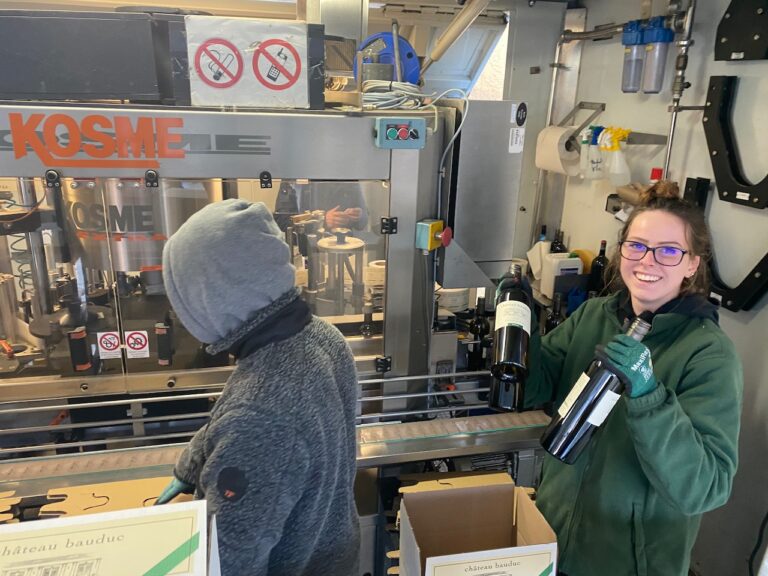
A lull in the rapid fire bottling so time for a quick smile.
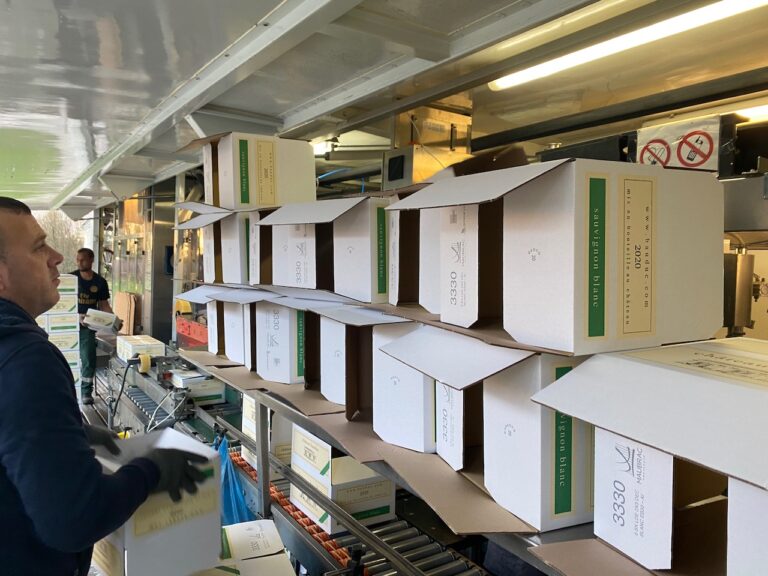
Another thing we need is cartons. A lot. With the whites and rosé we much prefer to bottle using the Stelvin screwcap and to label and box up at the same time.
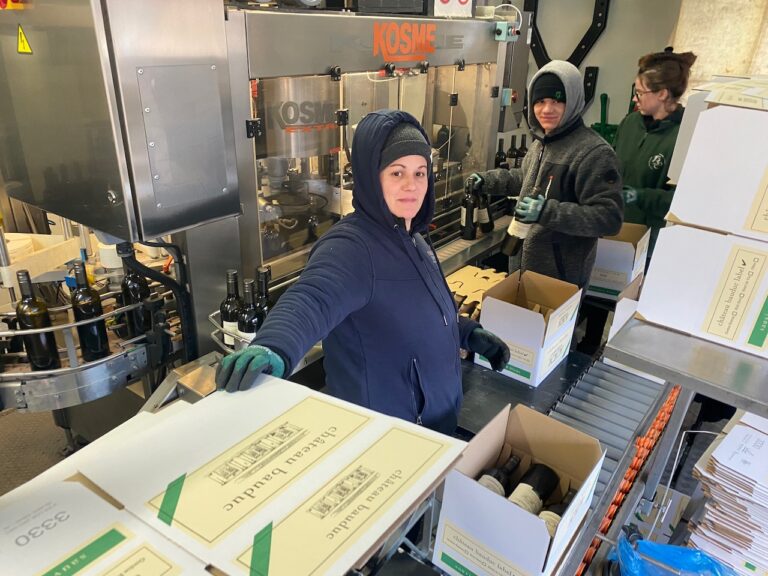
We can store the bottles with screwcaps in metal box pallets, if required, but the screwcaps are more vulnerable to being damaged when handled like that. Most people here know that I’m a bit fussy about everyone wearing special gloves, as it’s all too easy to dent a screwcap when you pick two bottles up in one hand.
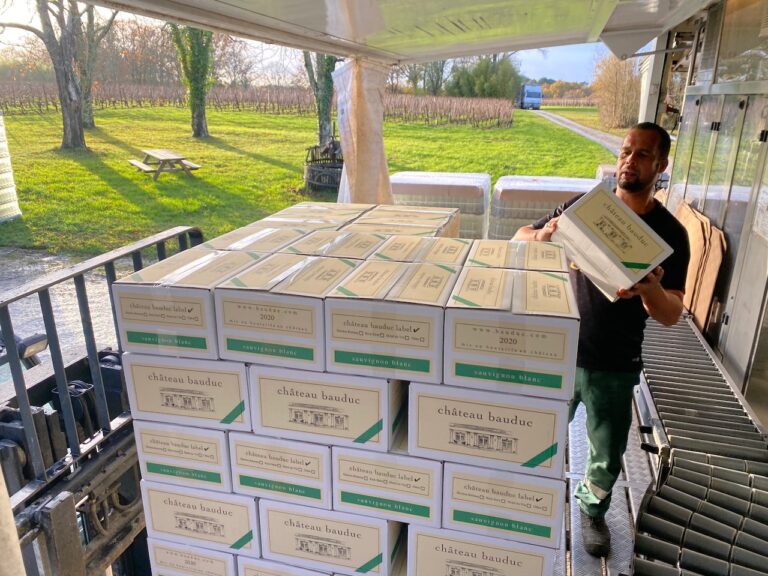
Bottled at the vineyard, for sure. Mis en bouteille au château, as it says on the label.
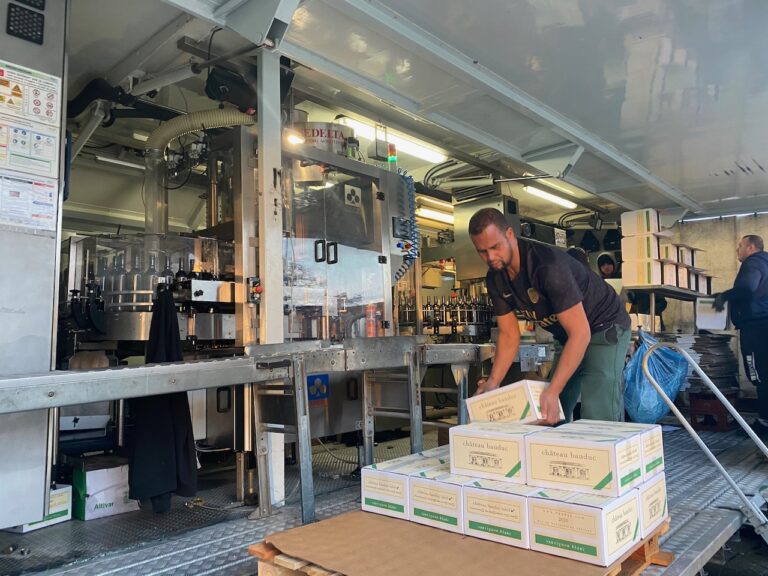
It’s quite comforting to know that our UK customers (those that buy direct) receive the wine in the cartons we pack them in, and not repacked into what is often a cumbersome ‘mailsafe’ box.
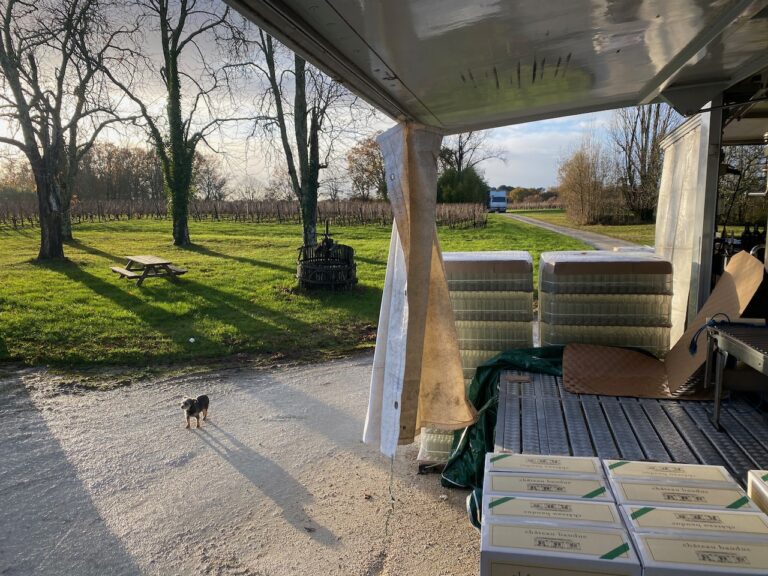
Margaux and the unused picnic table. The team make use of the ones inside.
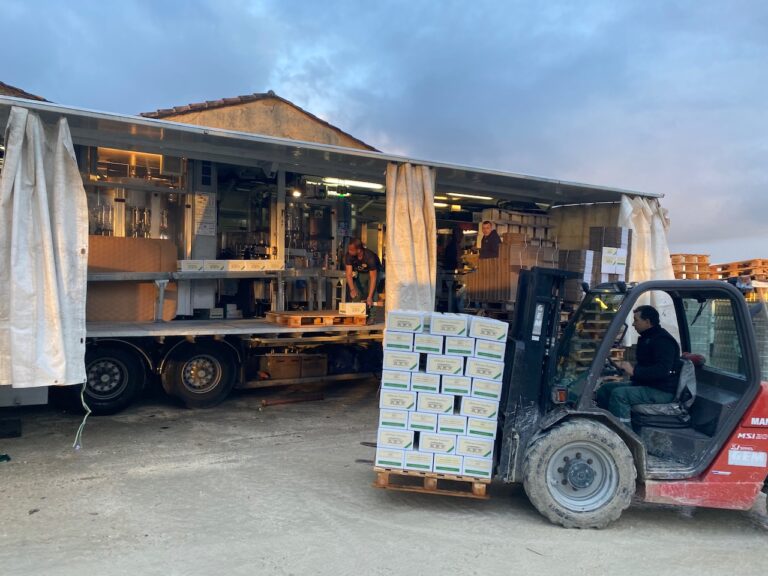
This forklift whirrs around the bottling area all day. A pallet off to be clingfilmed.
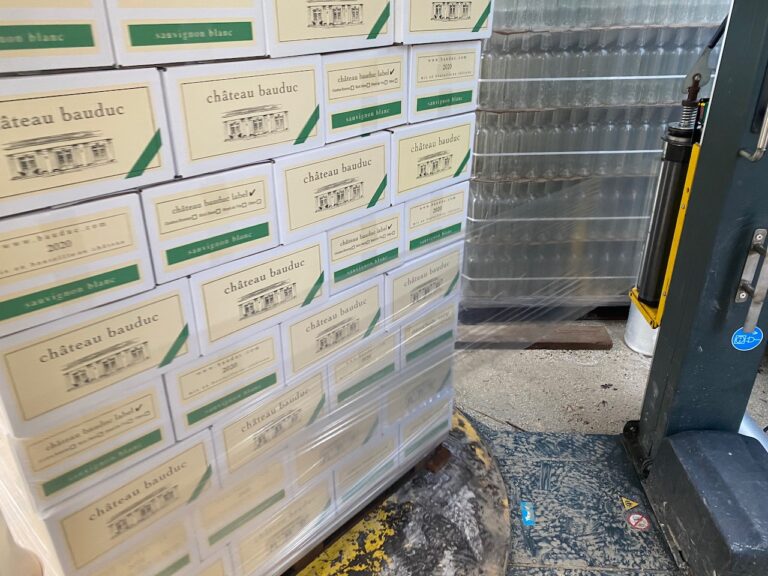
Wrapped by machine. Daniel thought we could save money by doing it ourselves by hand but life is too short. We had one trainee here doing this once and he did his back in.
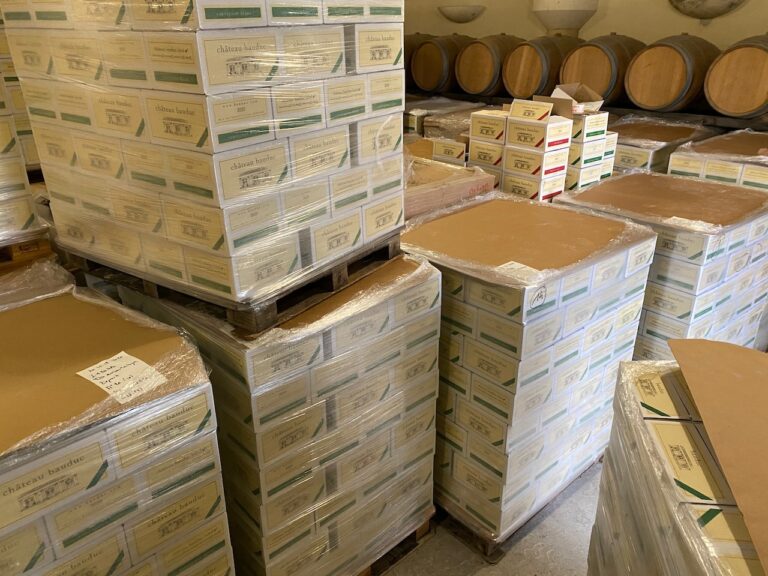
The trouble with boxing everything up is we can run out of space.
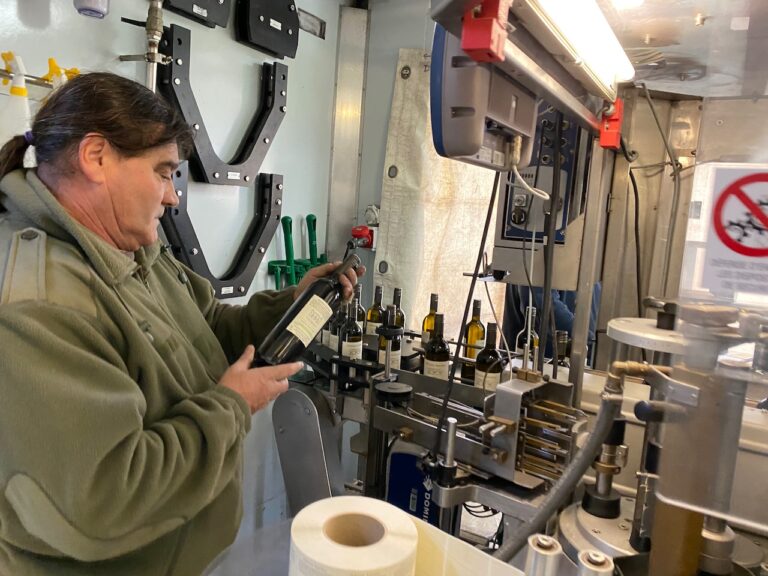
Daniel checking bottles of Les Trois Hectares blanc 2020.
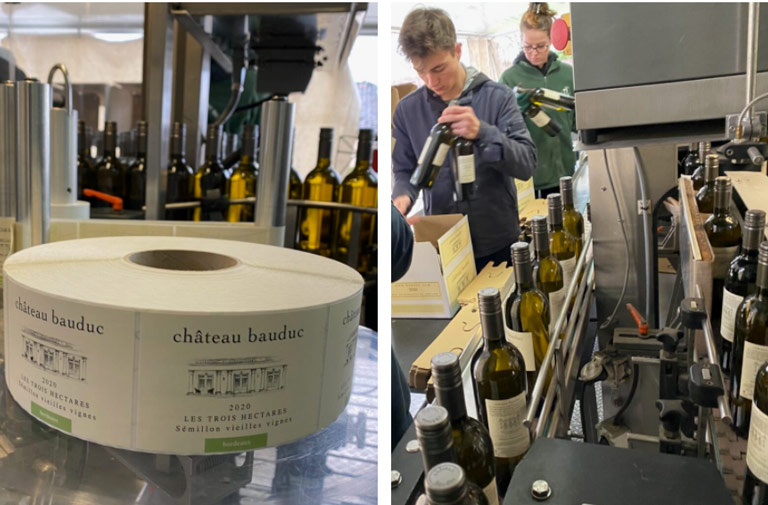
What?! No gloves. Excuse me jeune homme… (No really, I did.)
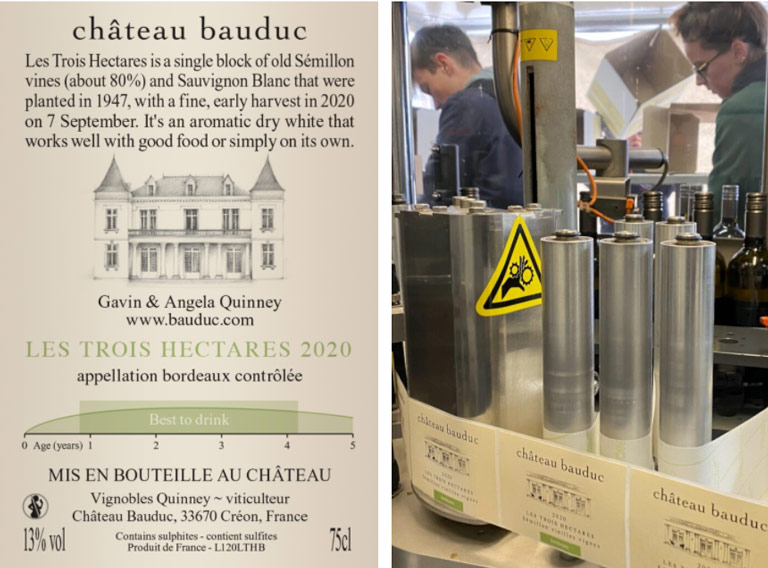
A small cuvée from old vines. Again, this year we’ve put the vintage on the back label, and even the day of the harvest in 2020. We doubt anyone needs to know that, to be fair.
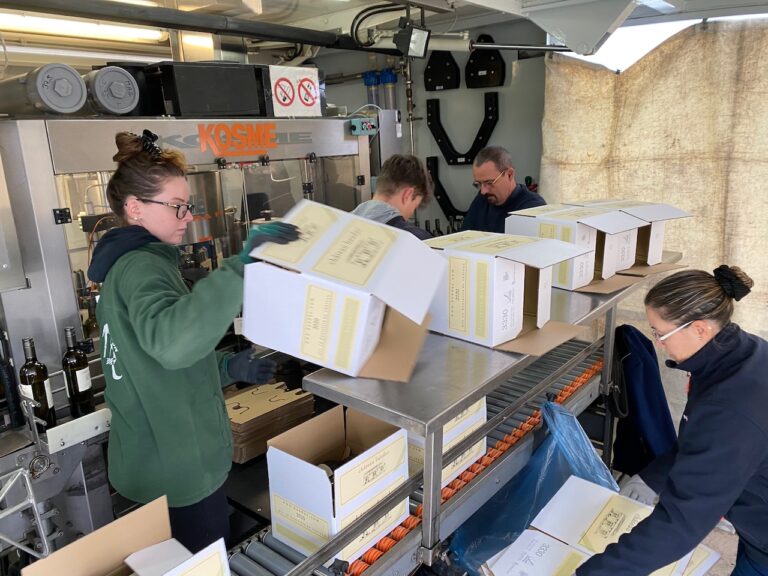
The staff worked on shifts but they all know what they’re doing.
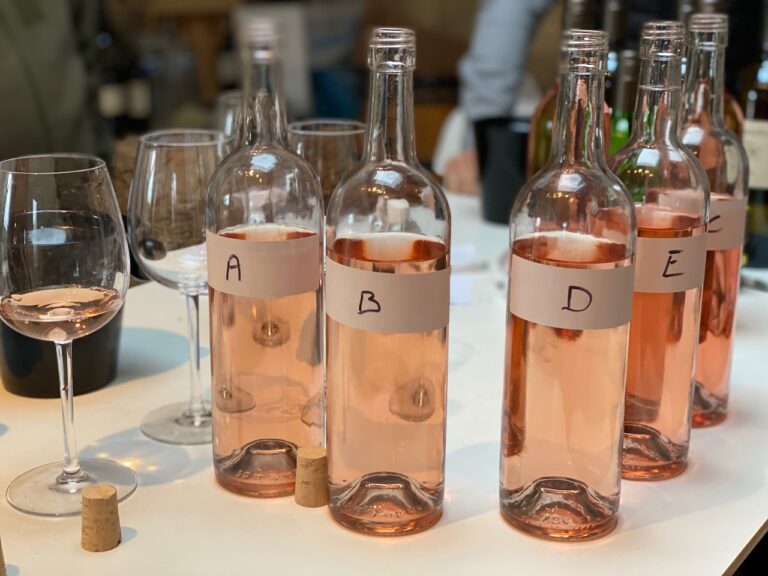
Blind tasting samples from the stainless steel tanks of rosé.
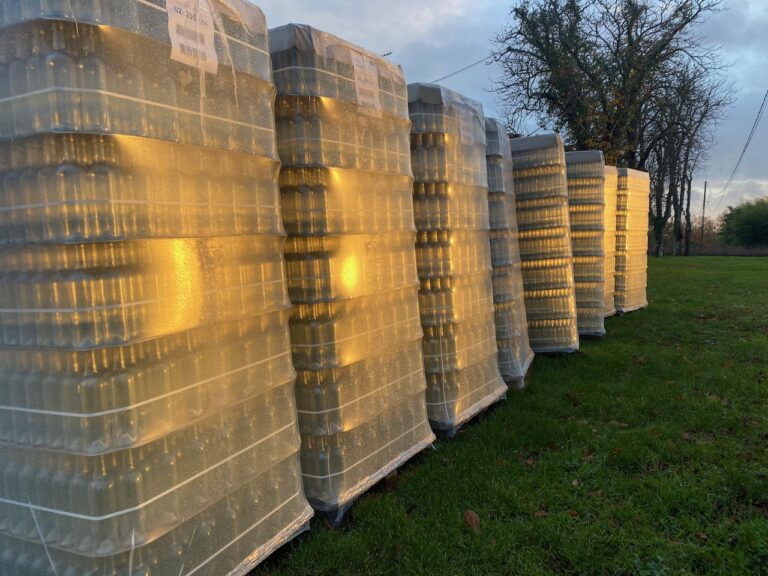
Clear glass for rosé of course.
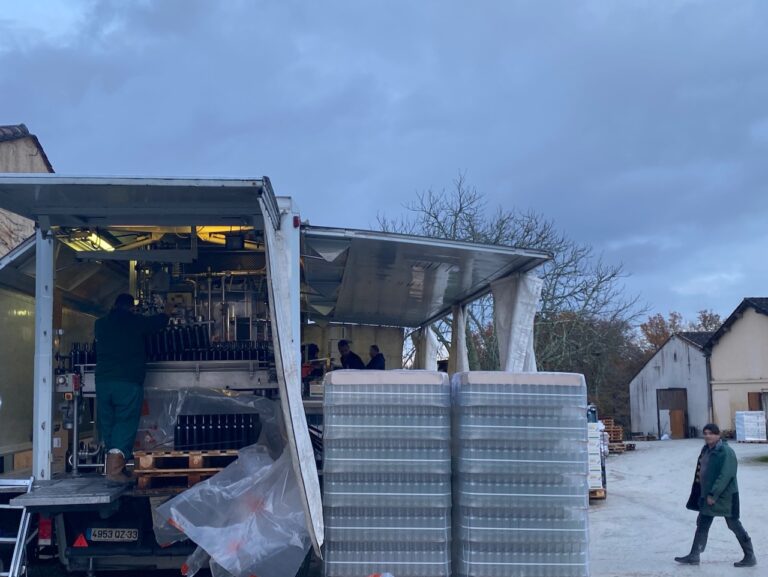
The bottling of rosé in winter seems at odds with the season you’d associate with drinking the stuff.
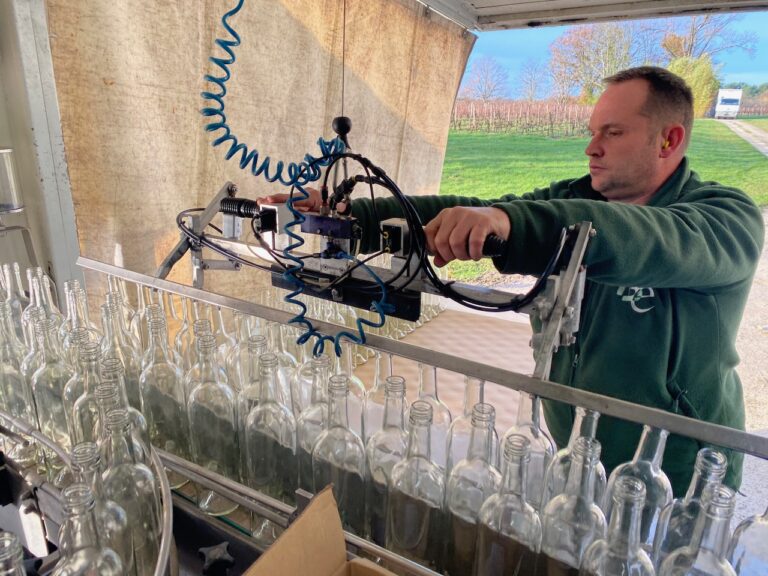
Start of the rosé line.
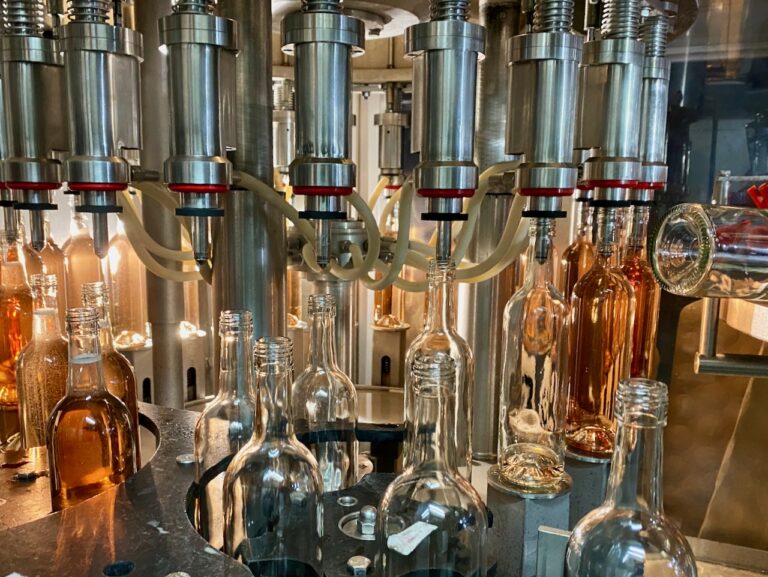
Filling the bottles.
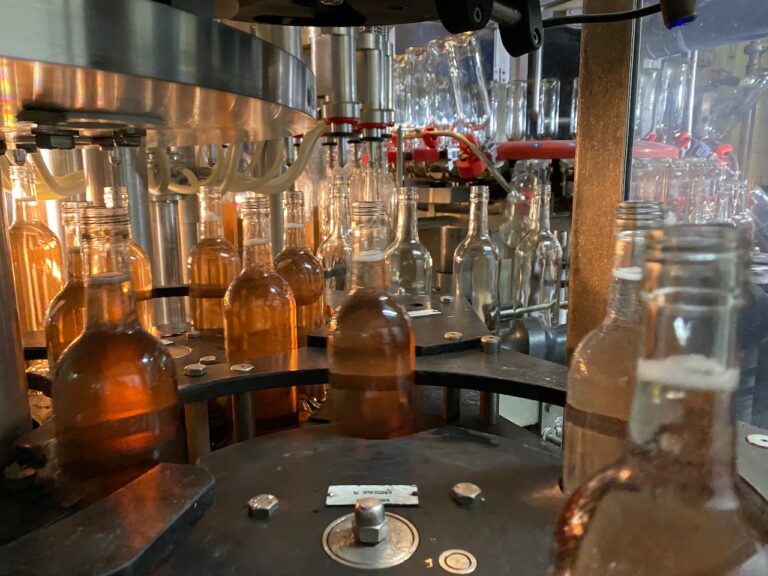
I still find it quite surprising that the juice of Merlot, Cabernet Franc and Cabernet Sauvignon can end up so pale, as a finished wine.
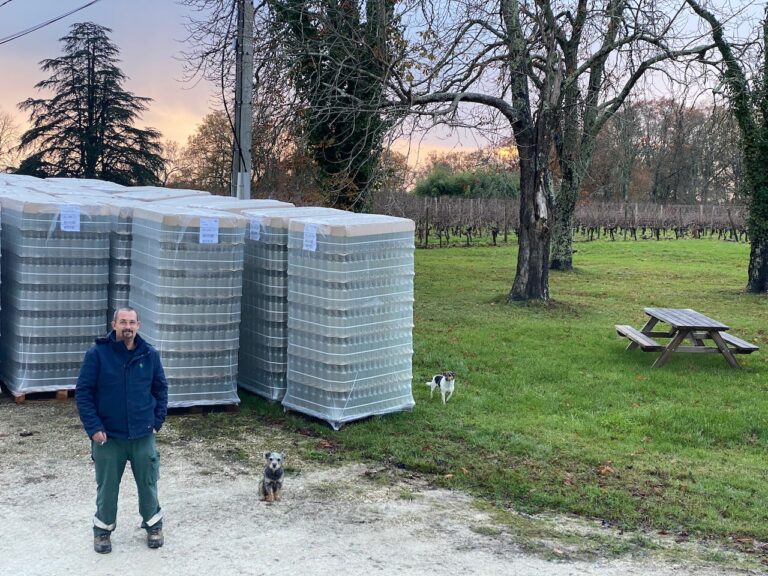
Eric was the boss of this bottling unit. The dogs gave their approval.
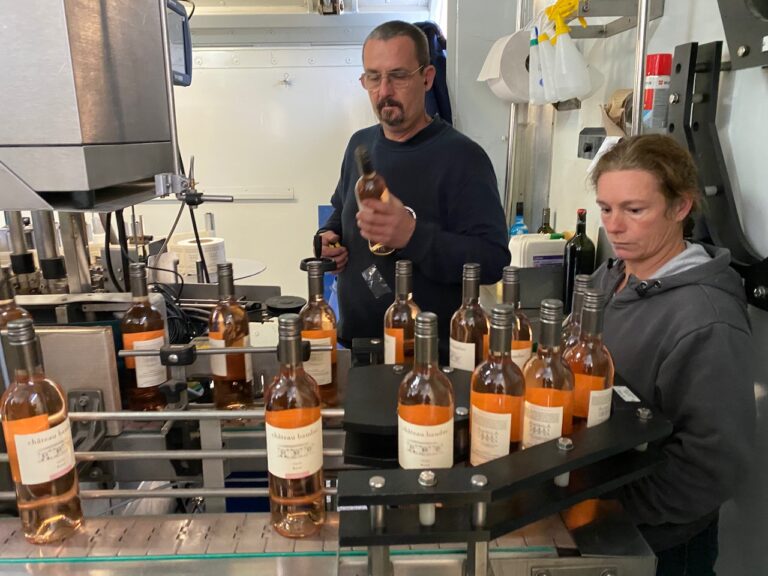
Nelly and Eric checking up on the finished product.
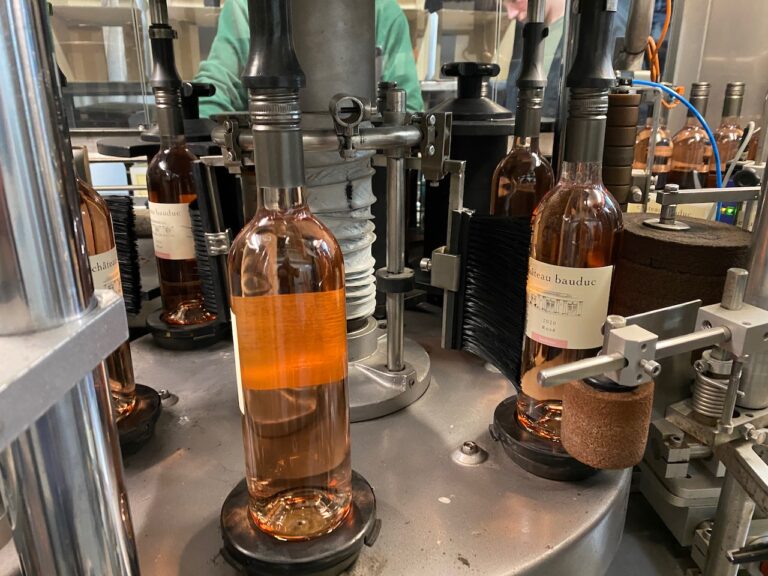
We’ve made more Rosé this year. As we sold out last May, it seems like a good idea.
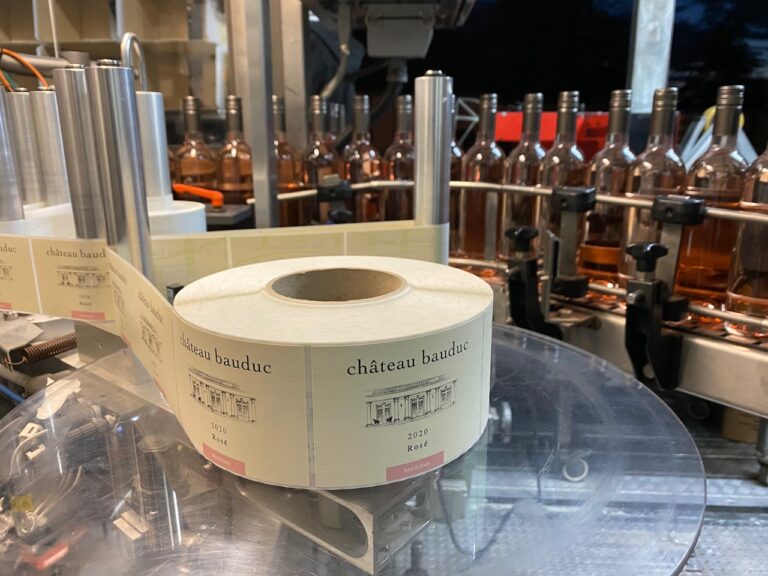
Two labels, same wine…
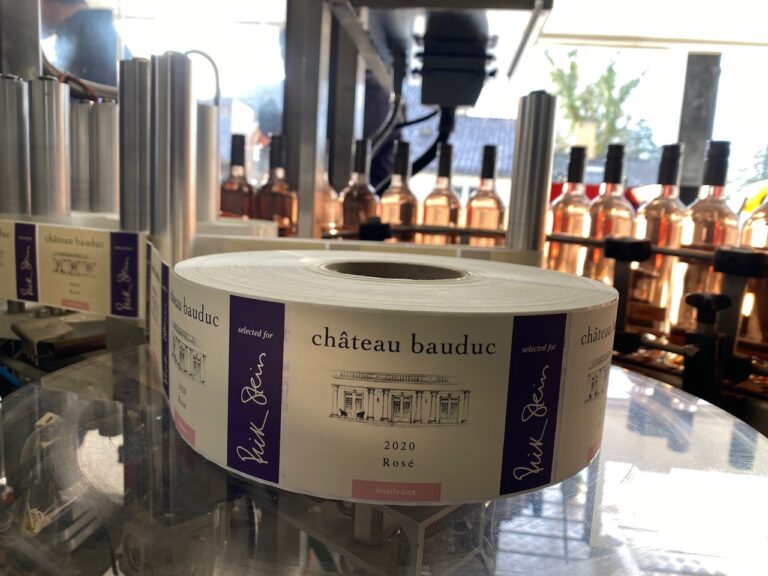
The Rick Stein label. The Bauduc Rosé has been the house pink for a decade.
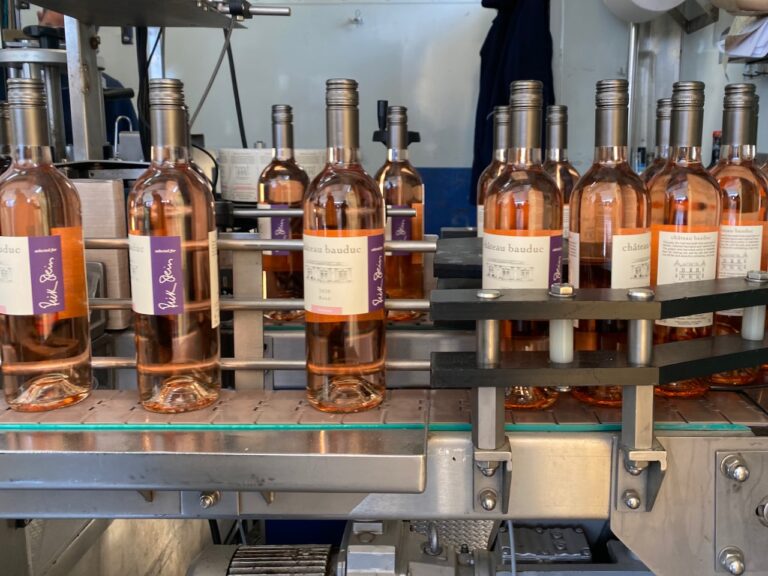
A neat package, we think.
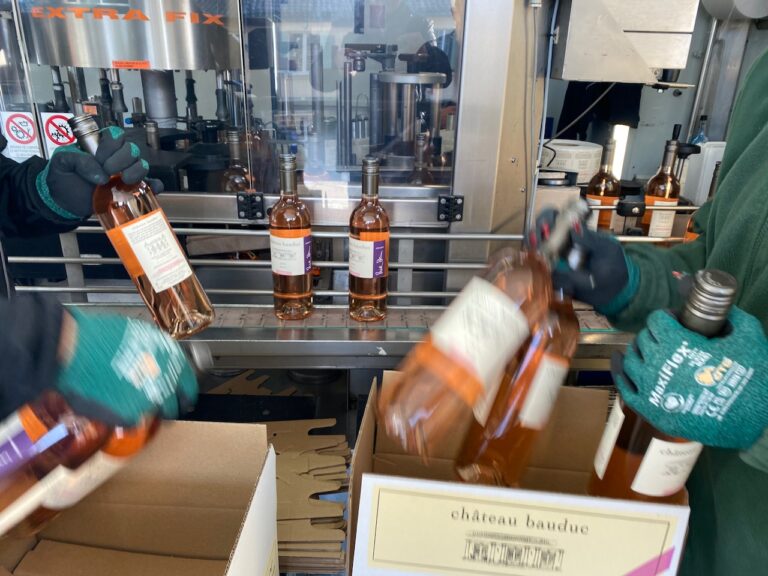
No time to hang about when the machine is in full swing.
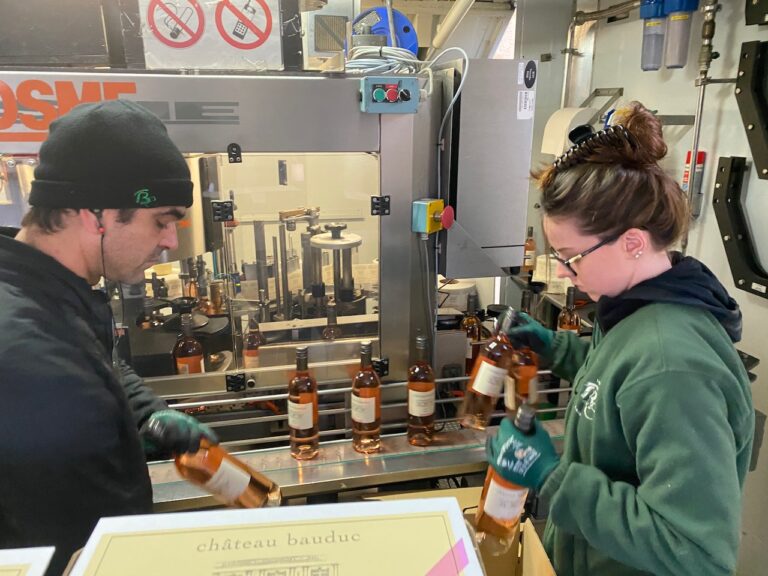
There are many who think rosé shouldn’t really be bottled in clear glass, as exposure to the light can prematurely age the pale pink wine inside.
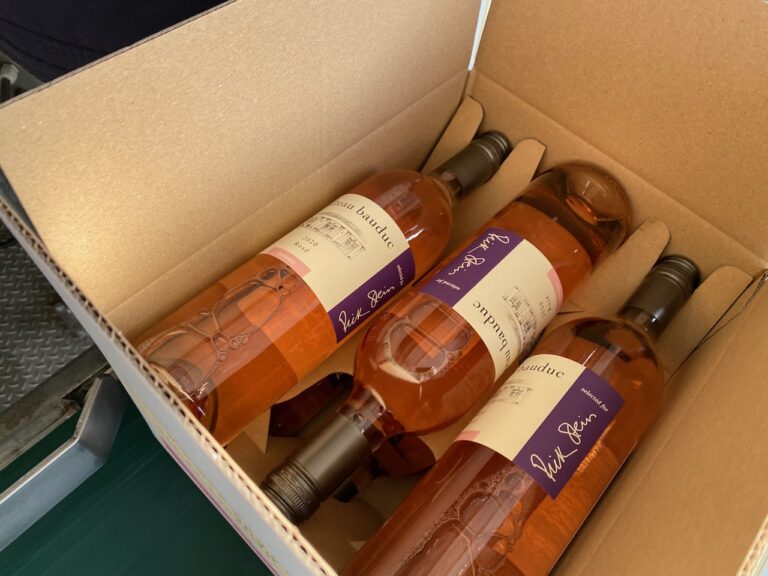
We suggest keeping our rosé in the box it comes in, for as long as is practicable, to reduce that exposure to the light.
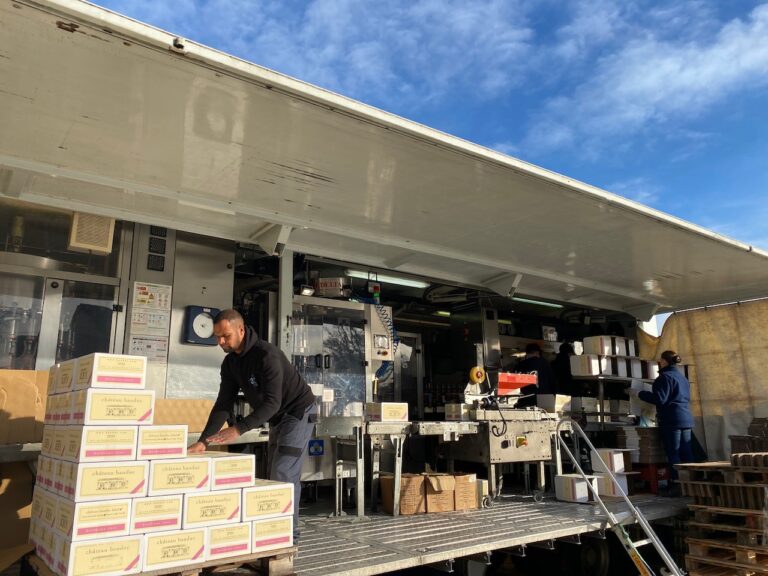
The colours on the boxes should help everyone understand what wine is inside – customers as well as warehouse staff in busy depots. And delivery drivers.
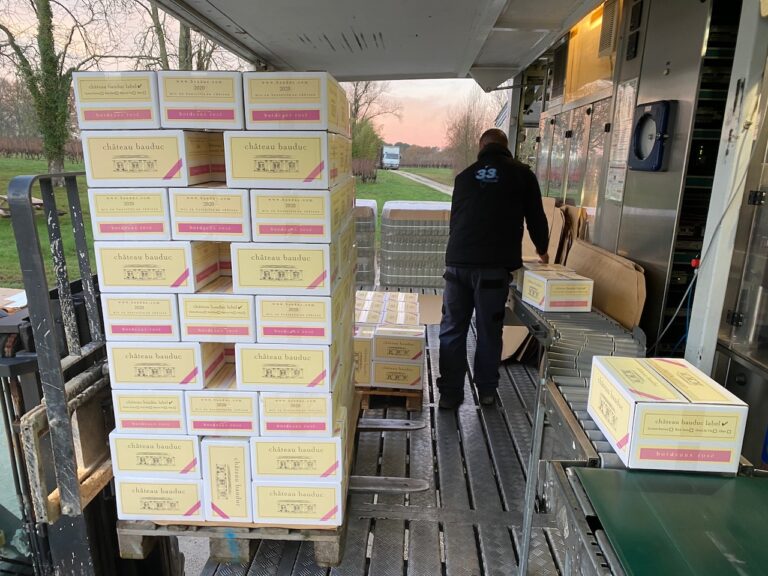
You would have thought that everyone would use the same type of pallet. They don’t. Different pallets for different markets, on the whole. If you scroll up, you’ll see some of the Sauvignon pallets stacked differently. They had 112 cartons of 6 – 672 bottles – on a VMF pallet. These are 100 x 6, on what’s called a Euro pallet. That’s more than enough info on this subject for now.
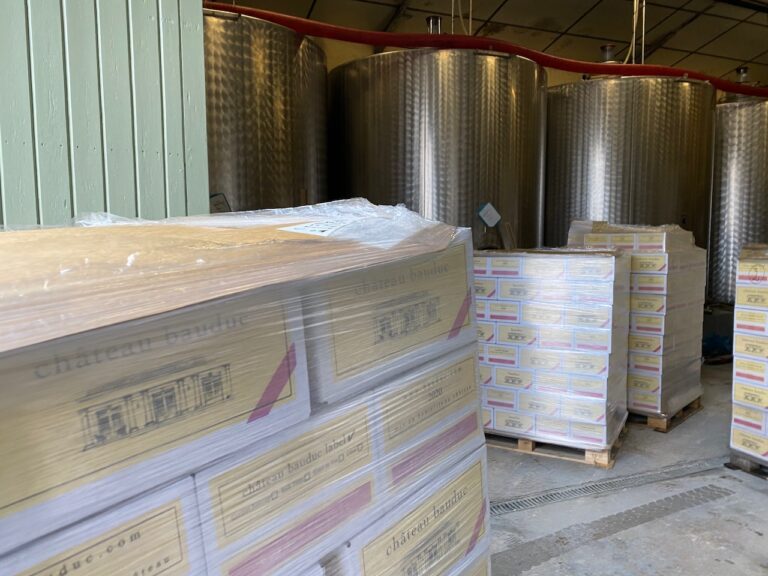
We’re using all available space.
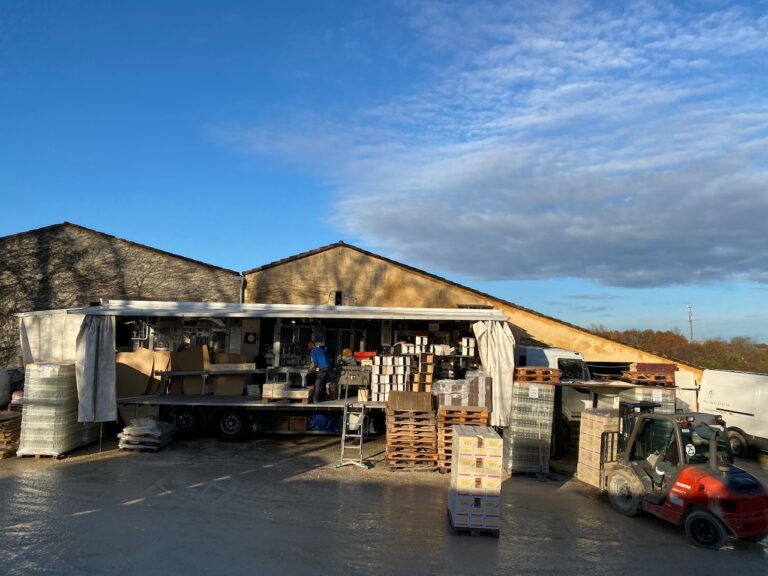
Clingfilming the last of the rosé.
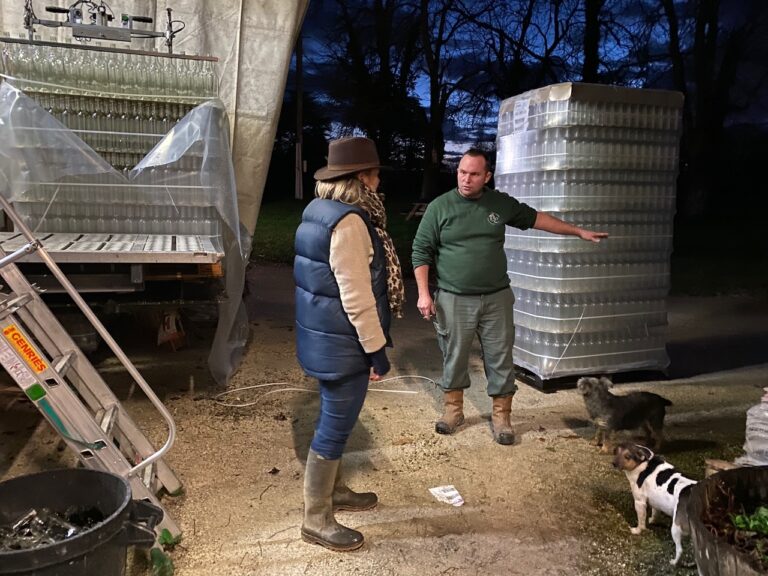
Inspection by Ange, with Margaux and Pavie.
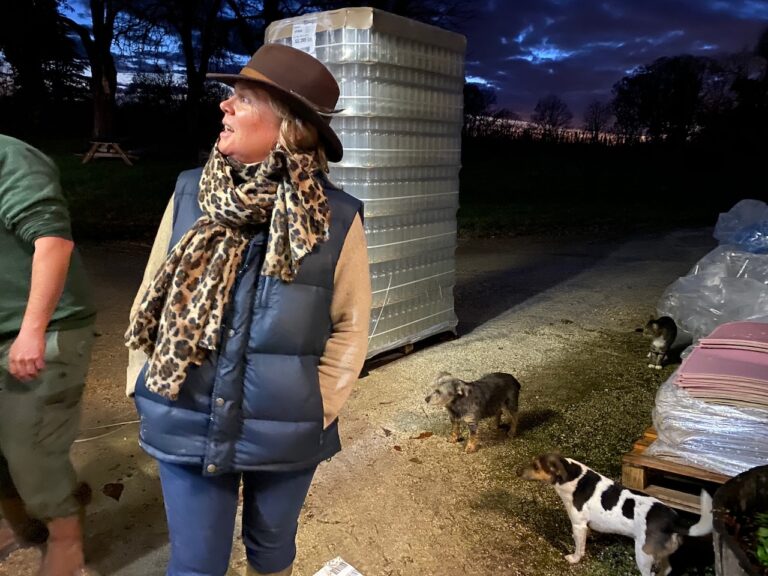
And by Goose the cat.
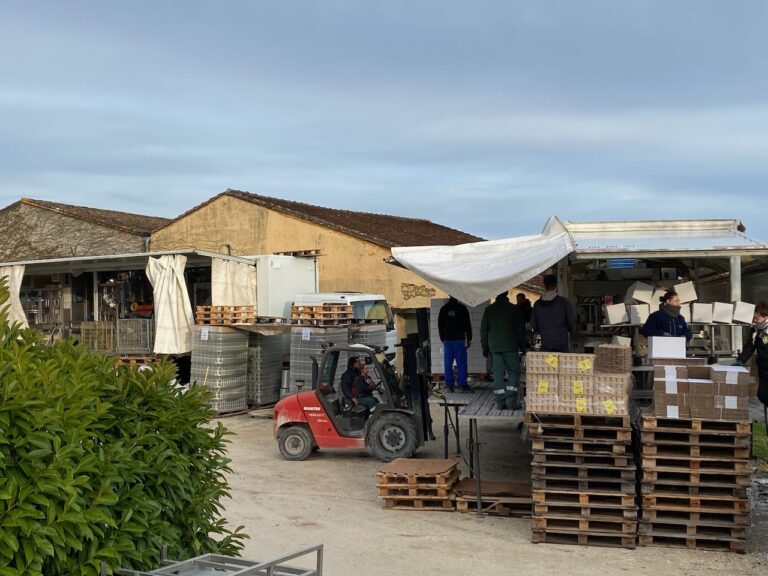
So now it’s on to the Rosé magnums and a few half bottles. Only guess what? For that we need a different machine. Holy Mo, it’s like a Sunday market round here.
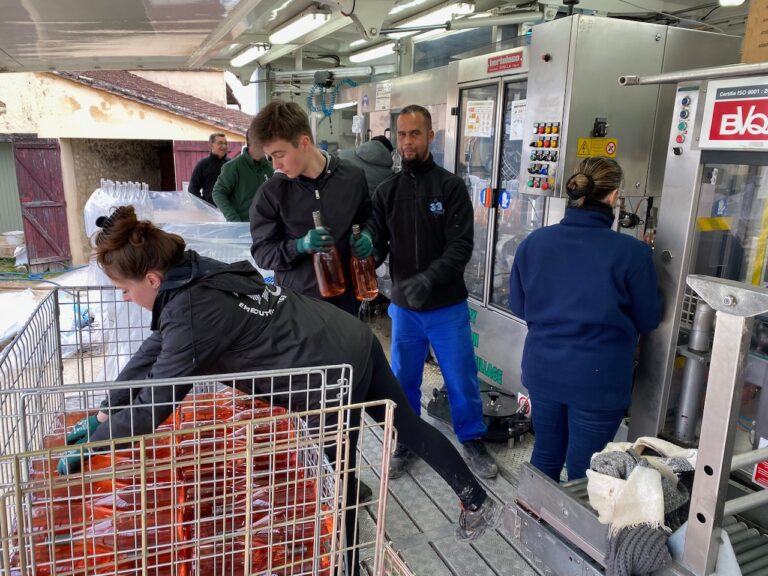
We quite like magnums of rosé. In our dreams, that is, of lunching with friends at Club 55 on the beach near St-Tropez. But in December in downtown Créon the bottling process is quite far removed from that image. (Actually, we did go once to Club 55, after a kind invitation from some friends. Don’t go with four small children would be our advice.)
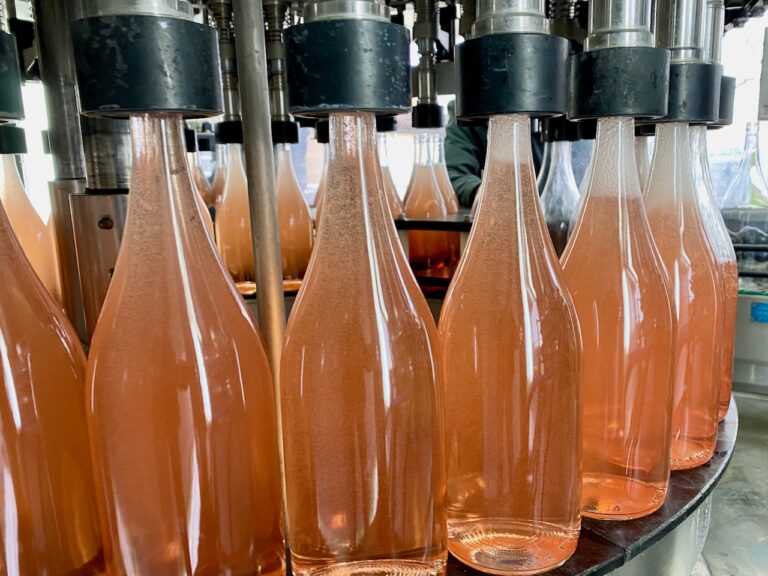
We haven’t tracked down any Bordeaux shaped magnums with a screwcap fitting, in clear glass. So we use Rhône or Burgundy style magnums.
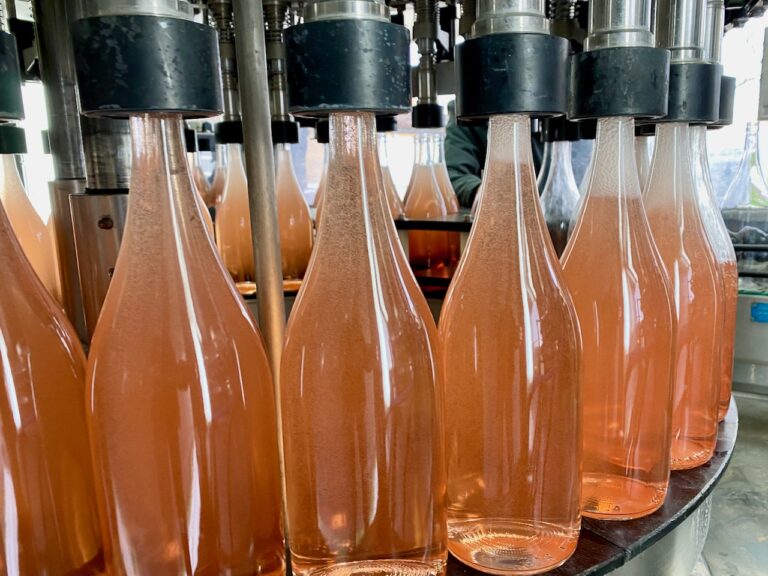
Smiles all round. We were a little less smiley when putting the labels on by hand, later.
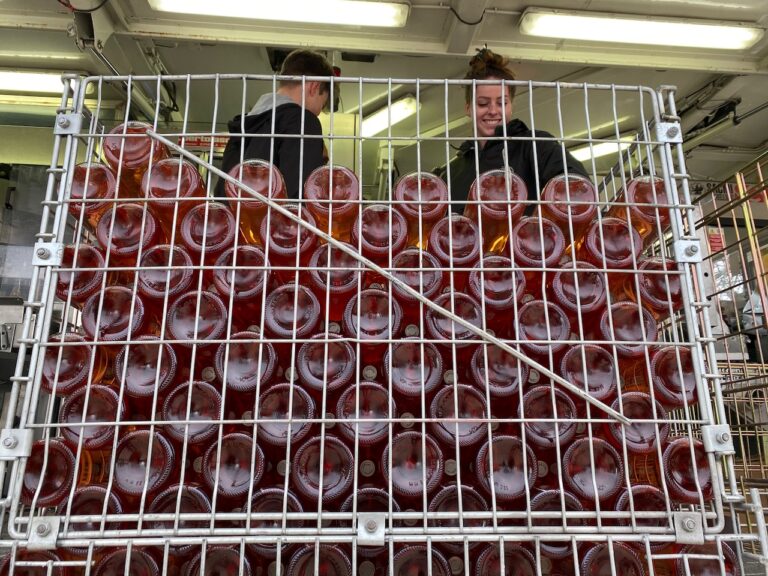
Machine number two. And now for the halves.
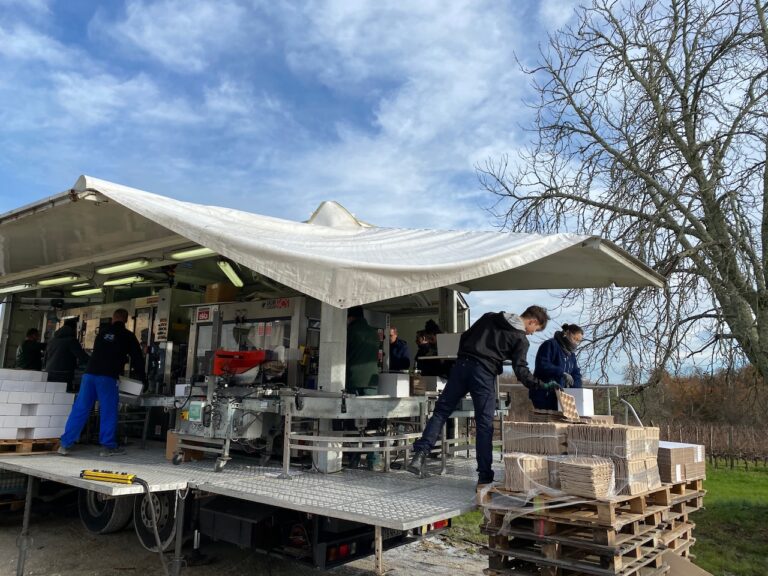
Halves of rosé are really quite dinky. We made the front labels slightly smaller than the ones for bottles and it makes a huge difference to the appearance.
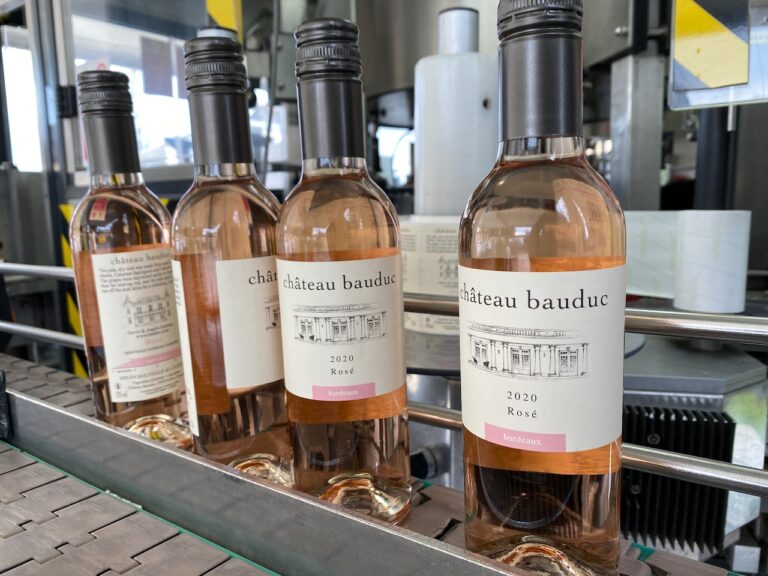
Half bottles should make a comeback, really. Perfect for a couple taking part in a Zoom or online tasting. If you like Zoom or online tastings. More anon.
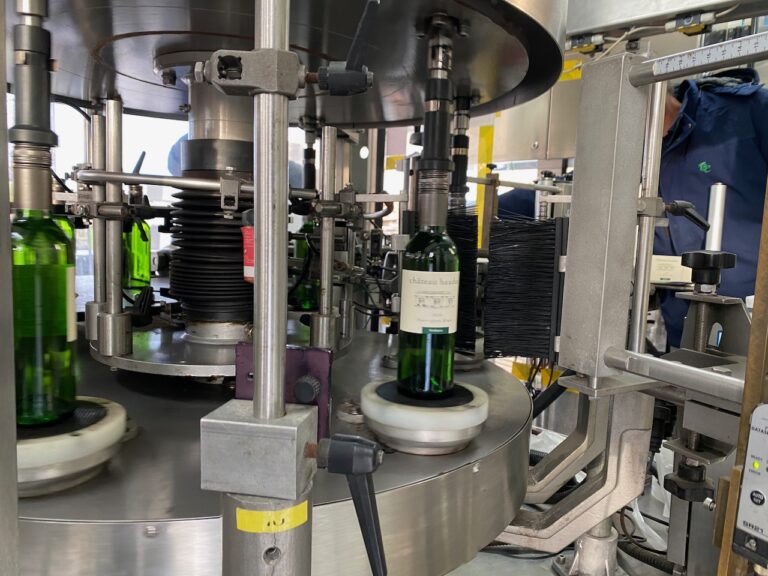
For our dry whites, we have to use traditional bottle green, not out fancy ‘antique’ green, which is a shame. Half bottles fell out of favour because they’re relatively quite expensive.
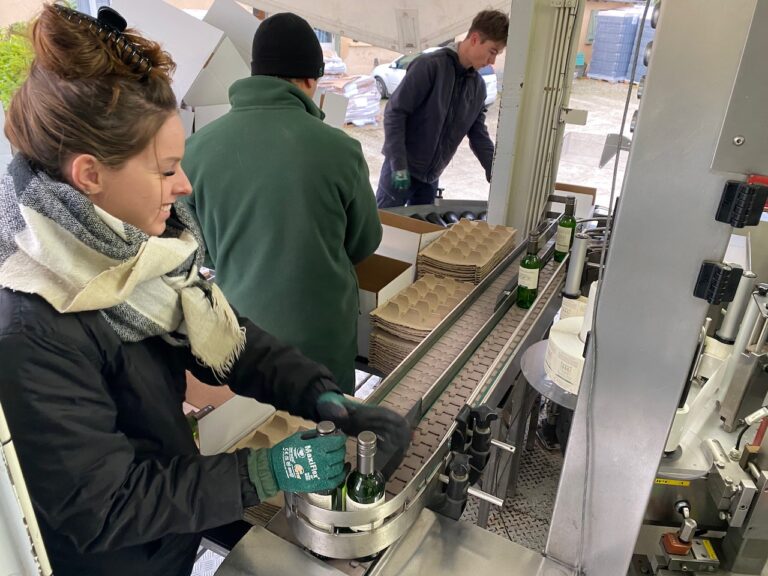
But otherwise the branding and packaging look the same as a bottle. This is Les Trois Hectares blanc.
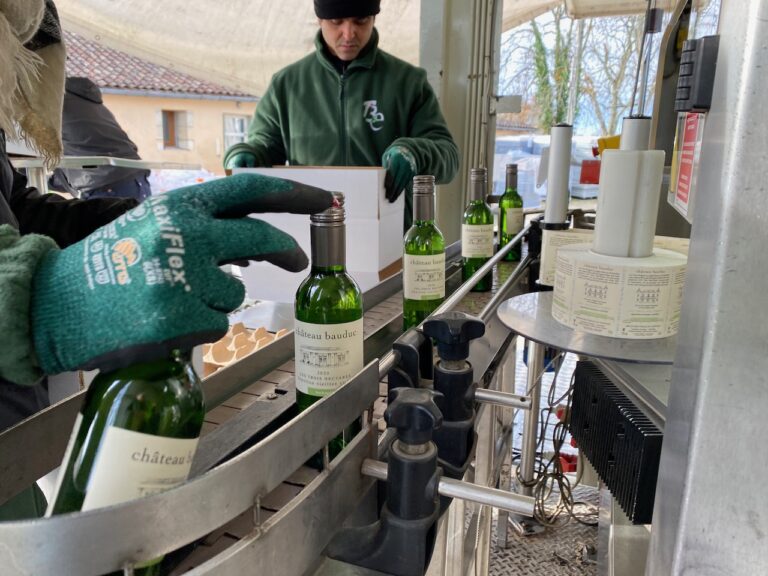
We bottled our 2018 red in the summer, and did some of our Bordeaux Supérieur in halves and magnums.
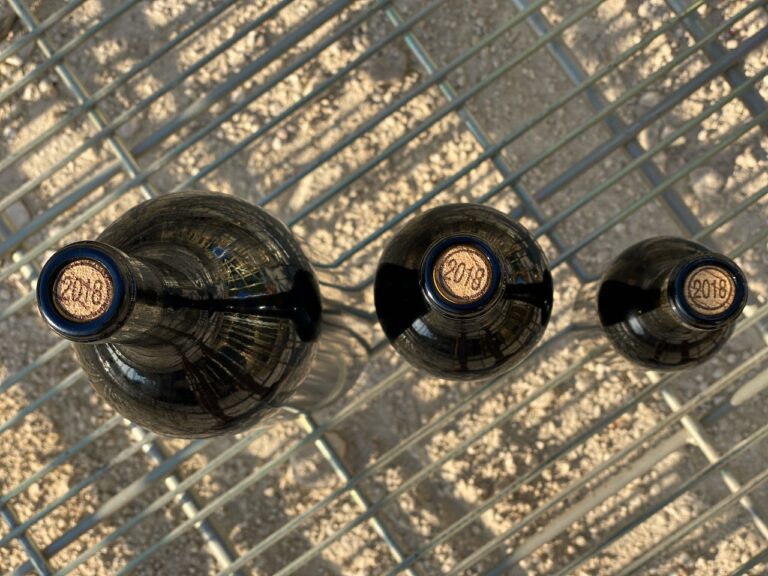
We’ve gone vintage specific on our back labels for our 2018 reds.
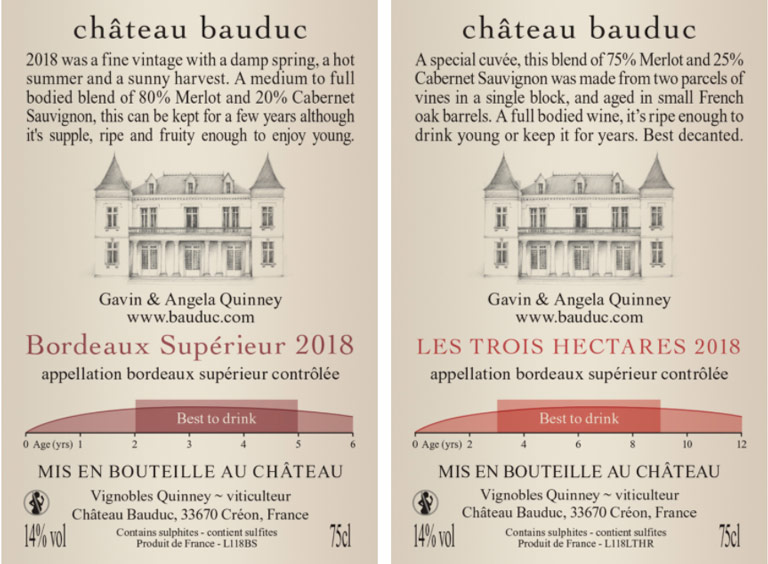
The scene in July 2020 for the bottling of the 2018 red.
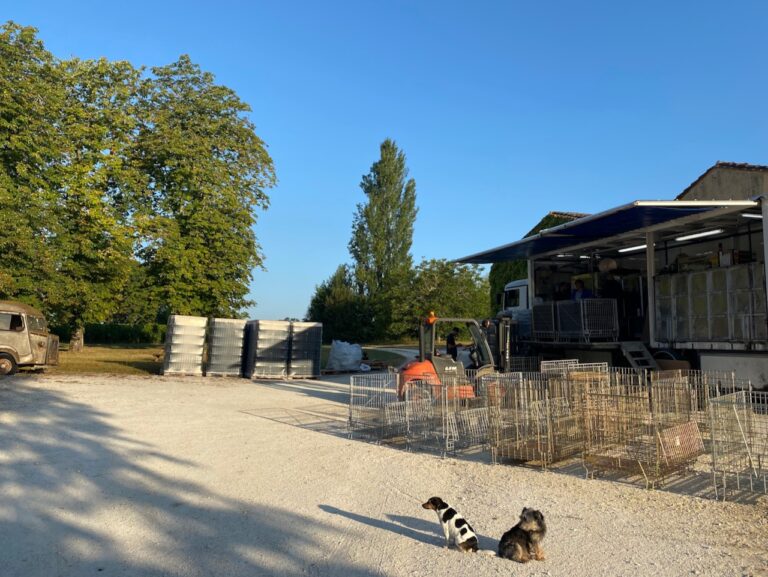
Ah, the days when the borders were open, and the husband and young sons of a London wine merchant could watch a foreign bottling machine in action. See you again soon, guys.
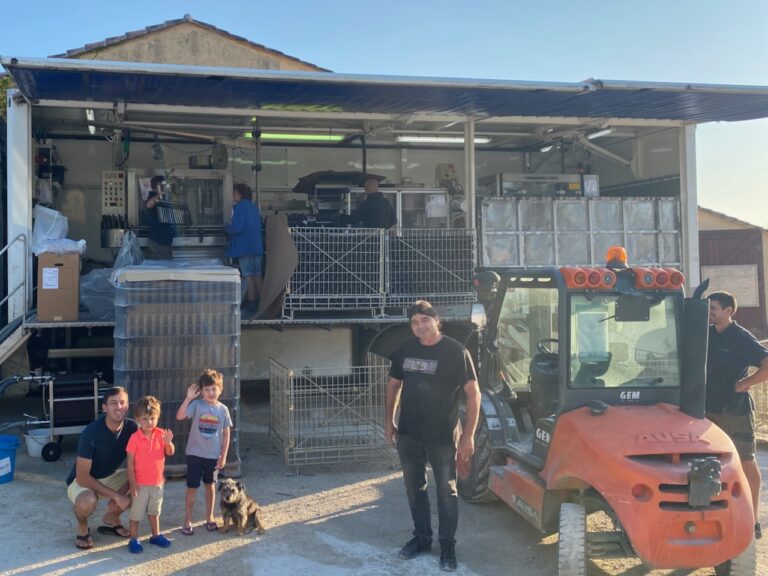
Since the 2017, we use the taint-free Diam corks as closures for the Bordeaux Supérieur. As we will keep much of the wine for a while before selling and shipping it, it makes sense to lay the bottles down into metal box pallets, without labels.
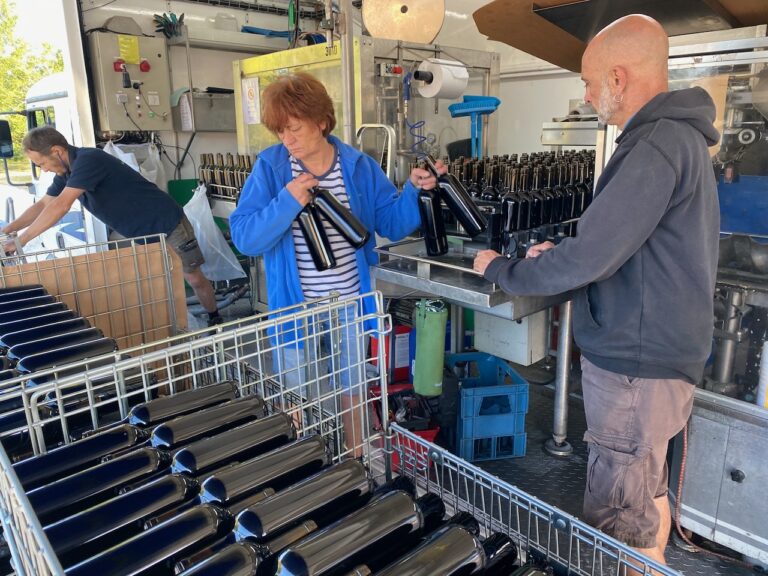
The reds in box pallets can be stacked much higher than pallets of wine that’s been labelled and packaged in cartons. Here we’re making up mixed cases over the weekend before Christmas.
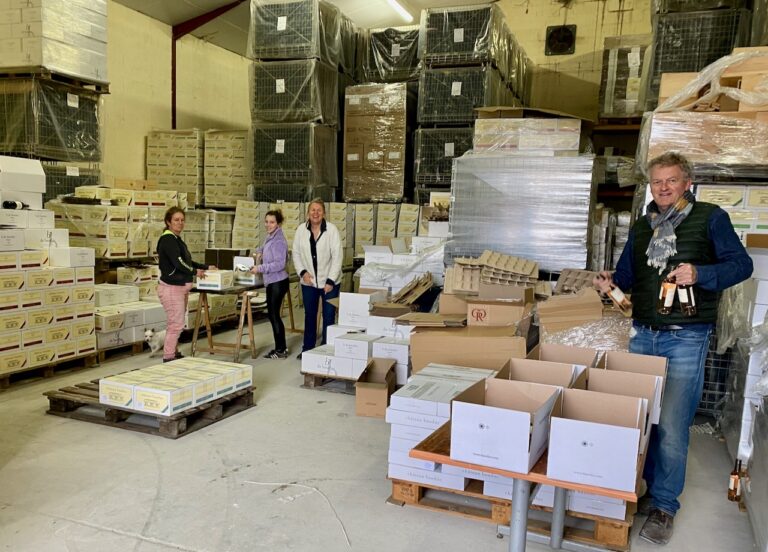
Nelly in what’s supposed to be the barrel cellar, trying to locate a particular pallet. Once we’ve shipped out these pallets by the end of April, the barrels will take up their rightful place. They’re in another part of the winery.
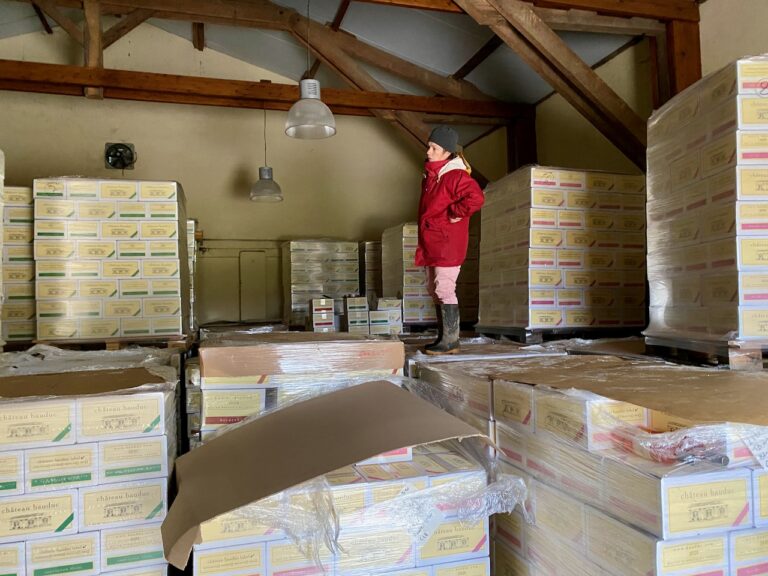
Sandra and Nelly in the foreground, with Ange and Nelly’s daughter Lucie beyond. Making up mixed cases after the bottling before shipping to London.
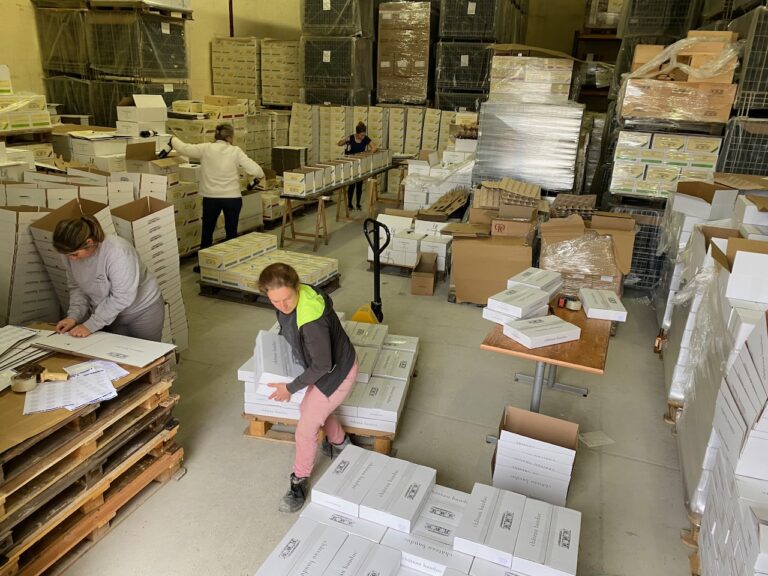
A double rainbow. Glad tidings, obviously. Sophie, Ange and Nelly.
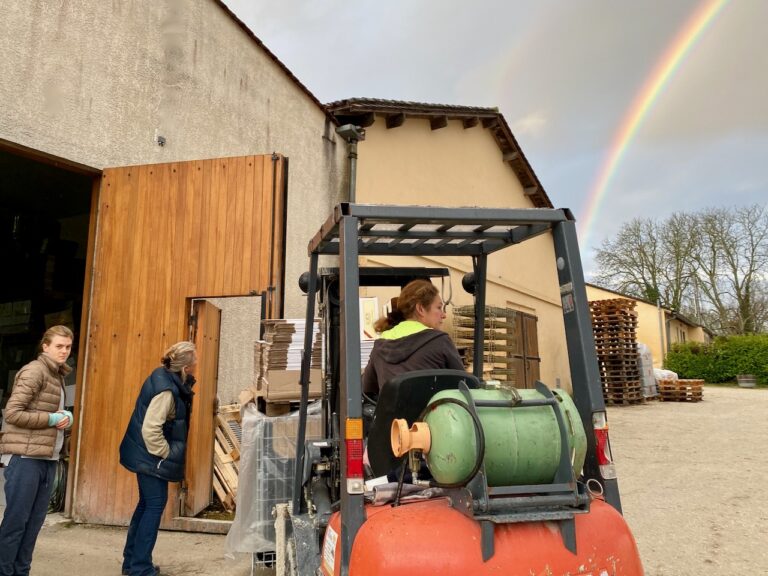
Our cunning plan was to bottle in mid-December and send up a load of stock to London City Bond just before Brexit proper (the end of the transition period). There it would rest a while before release, rather than in our cellars. Two lorries were booked for Monday 21st December. And then France closed the borders on the Sunday night to freight traffic, due to the fears of the new strain of Cov-id. Oops.
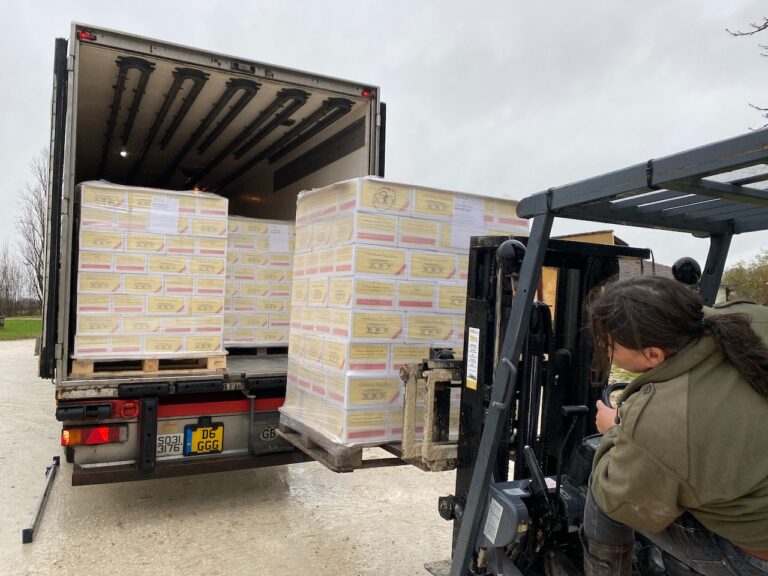
Luckily, one of the lorries heading back to the UK was coming up from Portugal. That’s the one above. That was the Monday morning and here’s Daniel loading up a few cases of Rosé.
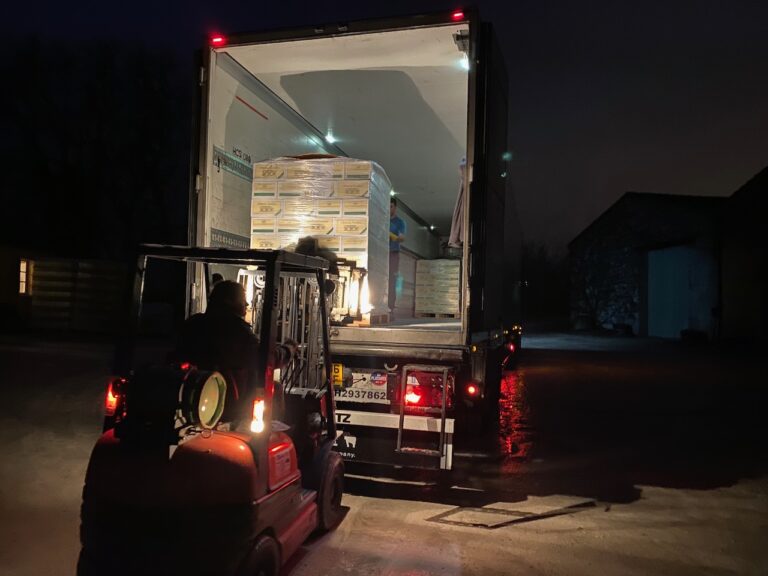
In the evening, our haulier-in-chief Dom made it down. He got the last ferry out to Calais on the Sunday night before the border closed.
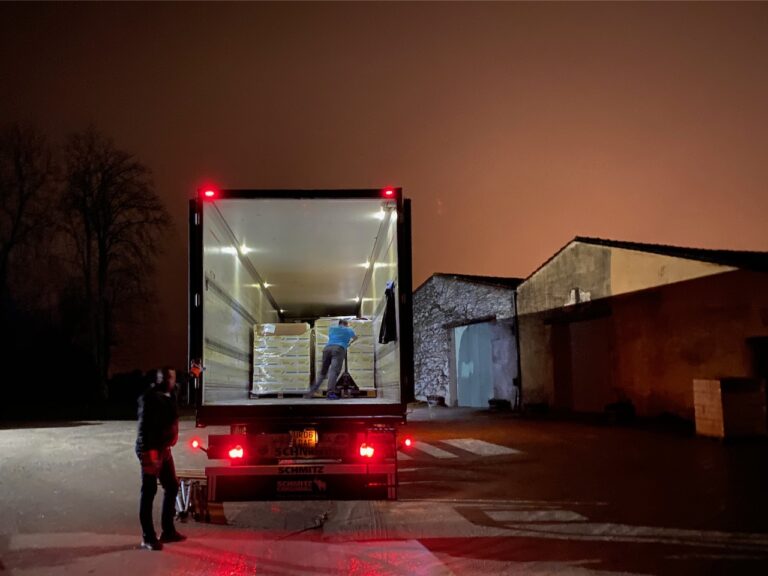
Dom and Claudio shared the driving. Which was a relief when you look at how many miles they clocked up in the space of a few days.
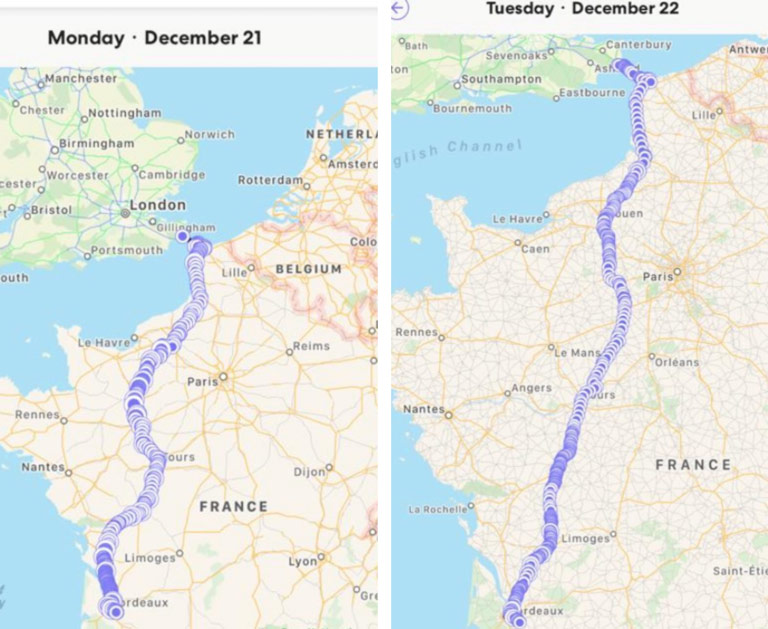
Now that is dedication to the Bauduc cause.
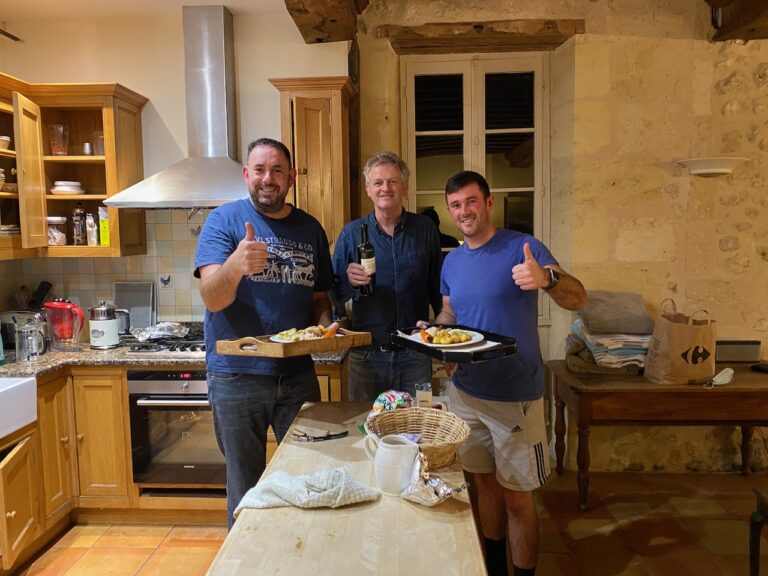
Naturally, we fed the boys and gave them beds for the night. And just a small glass of red.
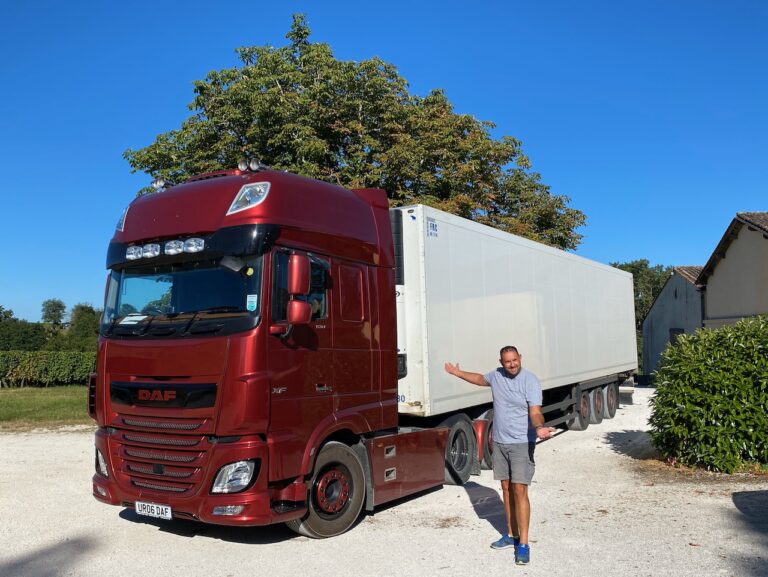
Dom transported our wine back to the UK in 2020, throughout the year, and we’ll soon find out just how the new rules will affect us all. He’s due back next week for another thrilling chapter.
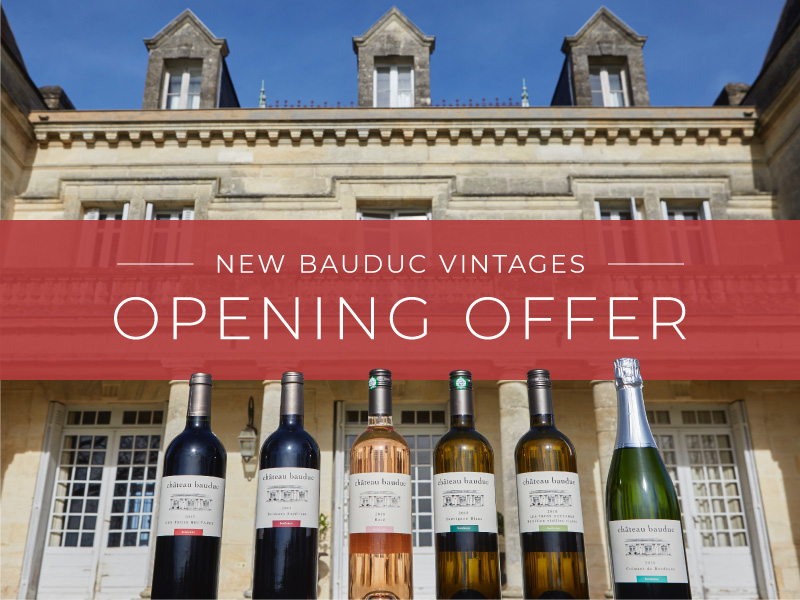
The February offer for our new vintages in the UK lasts until, well, the end of February.
For more photos, at the foot of each wine’s page on the website you can see a photo album ‘Pics at the Chateau’, to give you a flavour of the process. You can see all our photos in one place here Photo albums.
To see how the 2020 vintage went for the wines above, you can view our riveting photo journals here:
bauduc.com/news/-our-sauvignon-blanc-harvest-in-pics/

